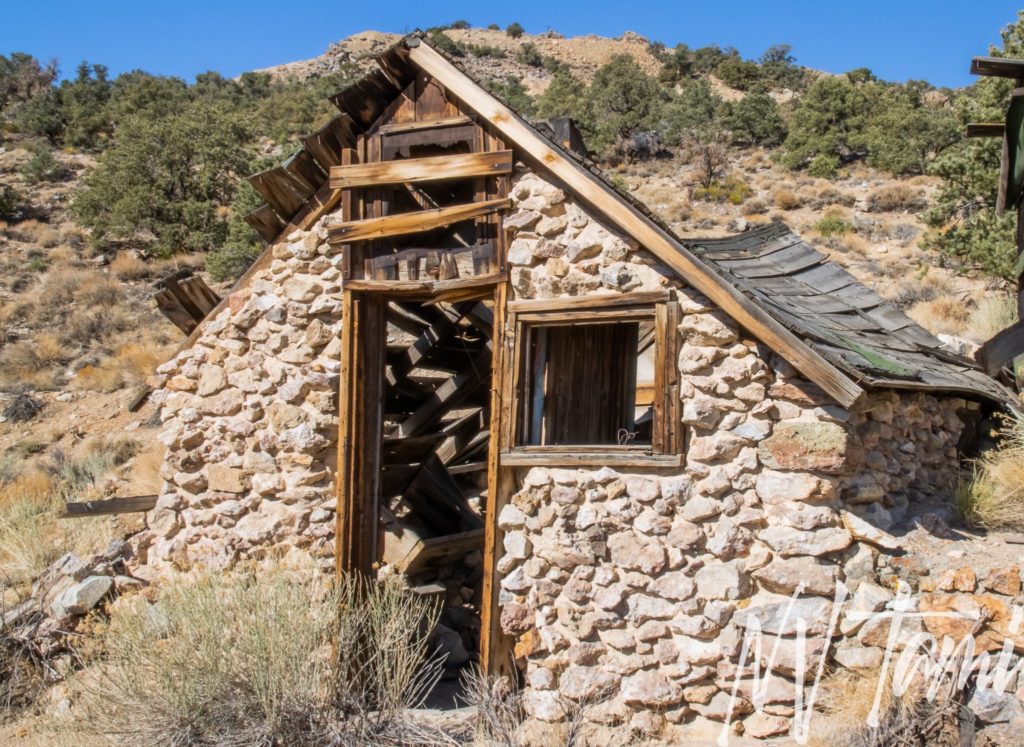
While Fish Lake Valley is known for ranching, in the past the valley had a variety of mining activities. The Dunnigans, an innovative and dedicated couple, worked the Red Rock mercury mine. While Walter created inventions such as the “jig,” Roberta homesteaded keeping a large garden and making friends with wildlife. Red Rock is a great day trip if you are in central Nevada.
Fish Lake Valley
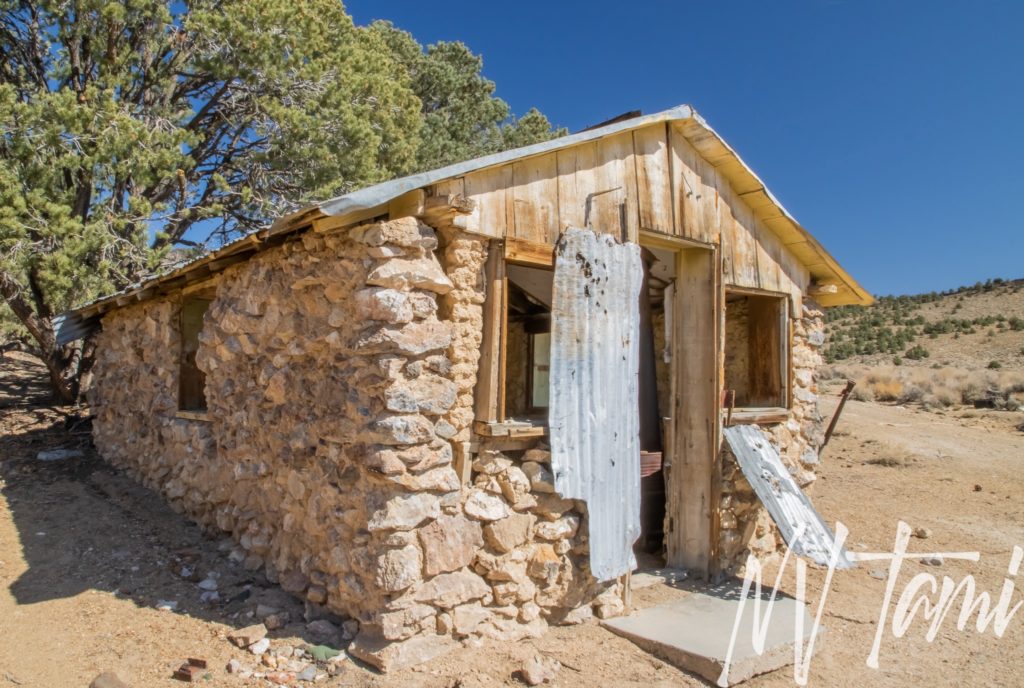
Fish Lake Valley was first explored by miners in the 1860s. Miners established the Palmetto Mining District in 1866 and a town soon developed. Gold and silver mining decreased in the late 1860s and was soon replaced by mining borax which was used in detergents, cosmetics and enamel glazes. Companies including Pacific Borax Group and Griffing Nyman’s extracted borax from the alkali marshes of Fish Lake Valley.
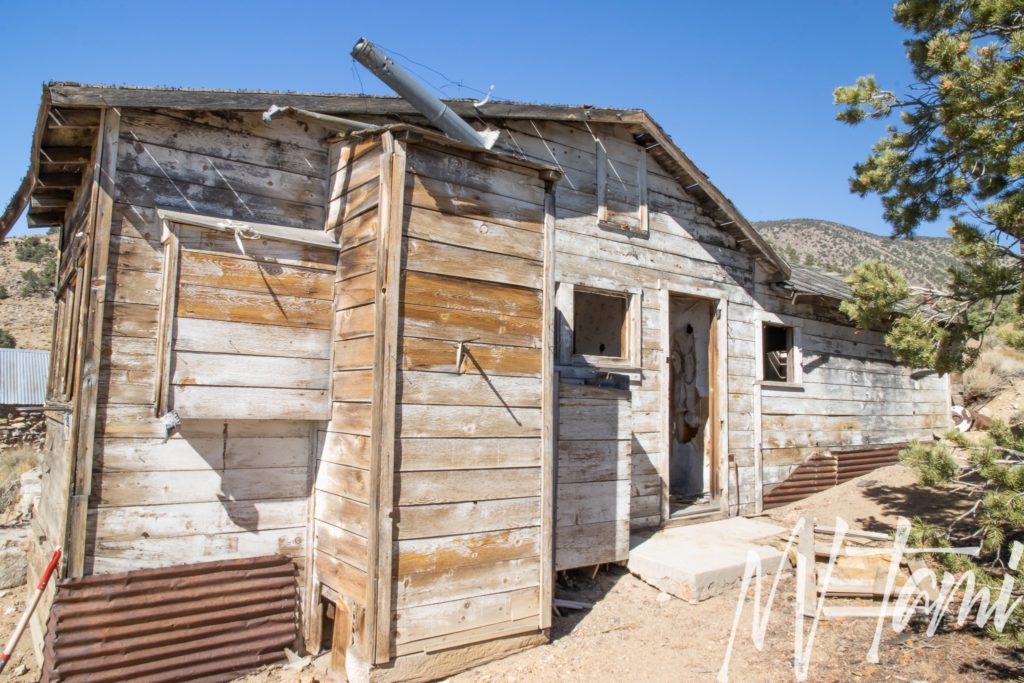
A post office was awarded on October 10, 1881 as the town grew. Nearby Dyer, named after the first postmaster, opened their post office on October 16, 1889. The Carson and Columbus stage line ran north to Aurora and Carson City connecting through Lida and Sylvania Mining District.
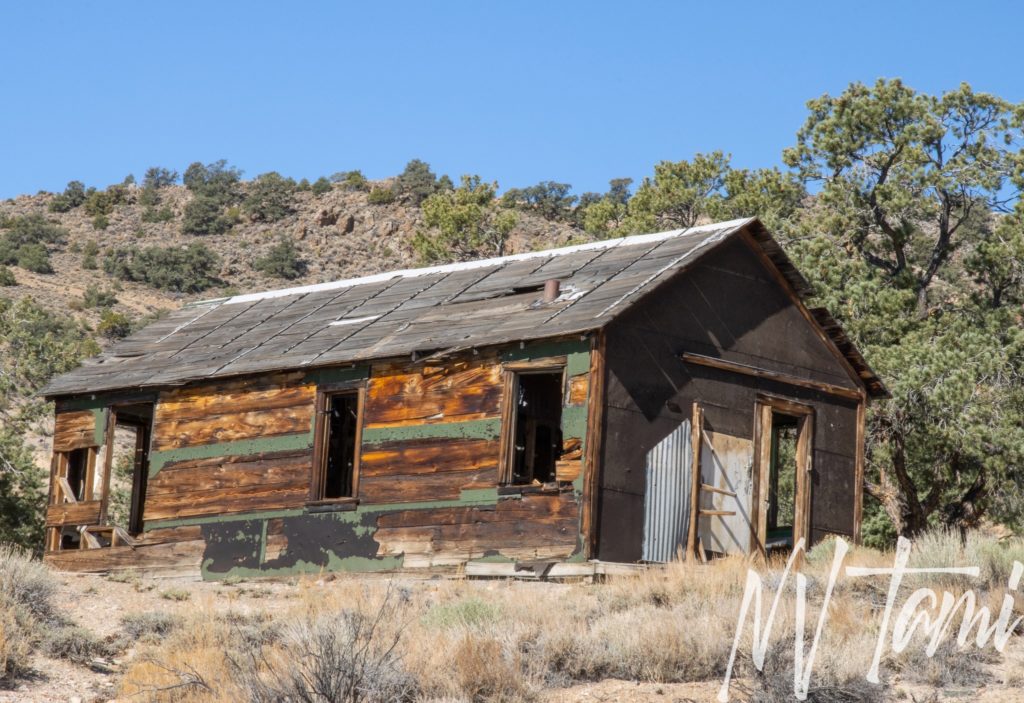
Many of the mines in the area were not large producers and mining soon declined as costs superseded meager profits. Discovery of oil in the 1920s resulted in a revival of mining in Fish Lake Valley and in the 1930s the area became Nevada’s largest mercury producer with mines including Red Rock, B&B, Container, OK Property and F&L.
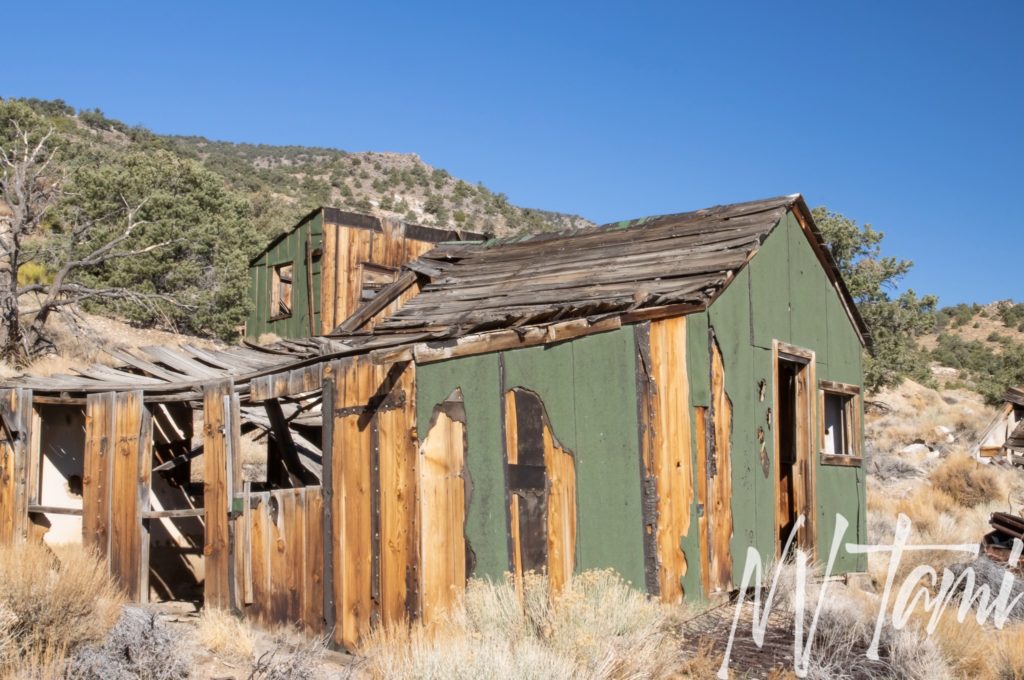
A good man
George Dunnigan, “a good man with mules,” hauled supplies to Goldfield and Tonopah on his freight wagon. With the introduction of the railroad, George’s services were no longer needed. He began traveling between mining camps and found employment on the Patterson Ranch in Fish Lake Valley in the 1920s. On days off, George prospected the valley and found outcroppings similar to those around the mercury mines where he grew up and worked in Lake County, California.
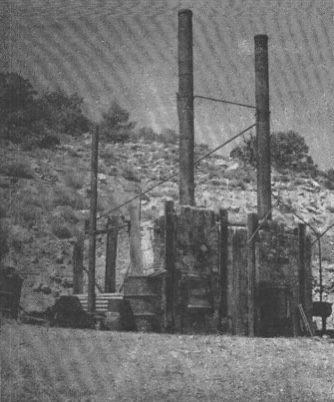
(Photo credit: Desert Magazine)
George filed four mining claims in 1927 and leased the mine to partners E.F. Good and J.L. McKinney. After buying out his partner Good, McKinney produced a thousand flasks or mercury between November 1928 and January 1931. He turned the mine over to new lessors in 1931 who produced two hundred flasks of mercury. George processed ore using retorts and a small rotary furnace constructed in the late 1920s. Mercury is measured by flask, unlike gold and silver, which are measured by weight. Each flask varied is shape, but held exactly 76 pounds of liquid mercury.
The mine was originally underground and had over 4000′ of tunnels. The upper level was 1250′ in length connected by a 75′ glory hole. Eighty feet below the upper level, was a second 480′ tunnel. Two open pits were later added which decreased labor expenses.
The Dunnigans
That is the Red Rock Mine. It’s not the greatest mine in the world…but it’s faithful.
Walter Dunnigan, Desert Magazine. February, 1956

(Photo credit: Desert Magazine)
George took over working the mine in 1932. He convinced his son Walter quit his job at Union Oil in Oleum, California to assist. Walter’s wife, Roberta, joined the men in 1932. In seven years, they produced one hundred thirty flasks of mercury.
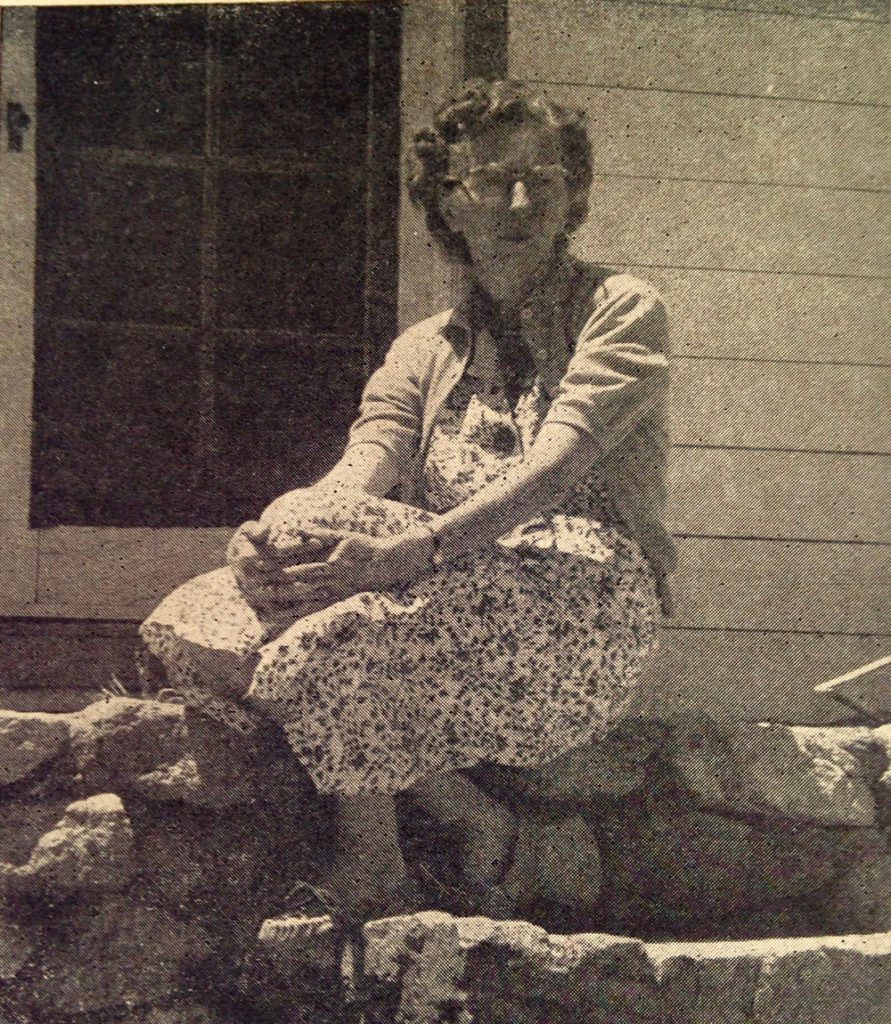
(Photo credit: Desert Magazine)
Walter and Roberta lived in a rock cabin by the mine. Water was provided by a 100-gallon tank transported on a Model-A truck bed and electricity was supplied by a generator giving the couple modern conveniences. The couple procured supplies were procured in Tonopah, seventy-five miles away and mail service thirty miles south in Dyer. Roberta kept her and her father-in-law’s house, helped in the mine and tended a large garden that grew most of the family’s produce. She had a gift with animals and made pets of wild animals, including skunks. Despite abundant wildlife, including deer, the family preferred to make friends with the animals rather than stock their freezer. The mine ownership was transferred to Walkter and Roberta when George died in 1937.
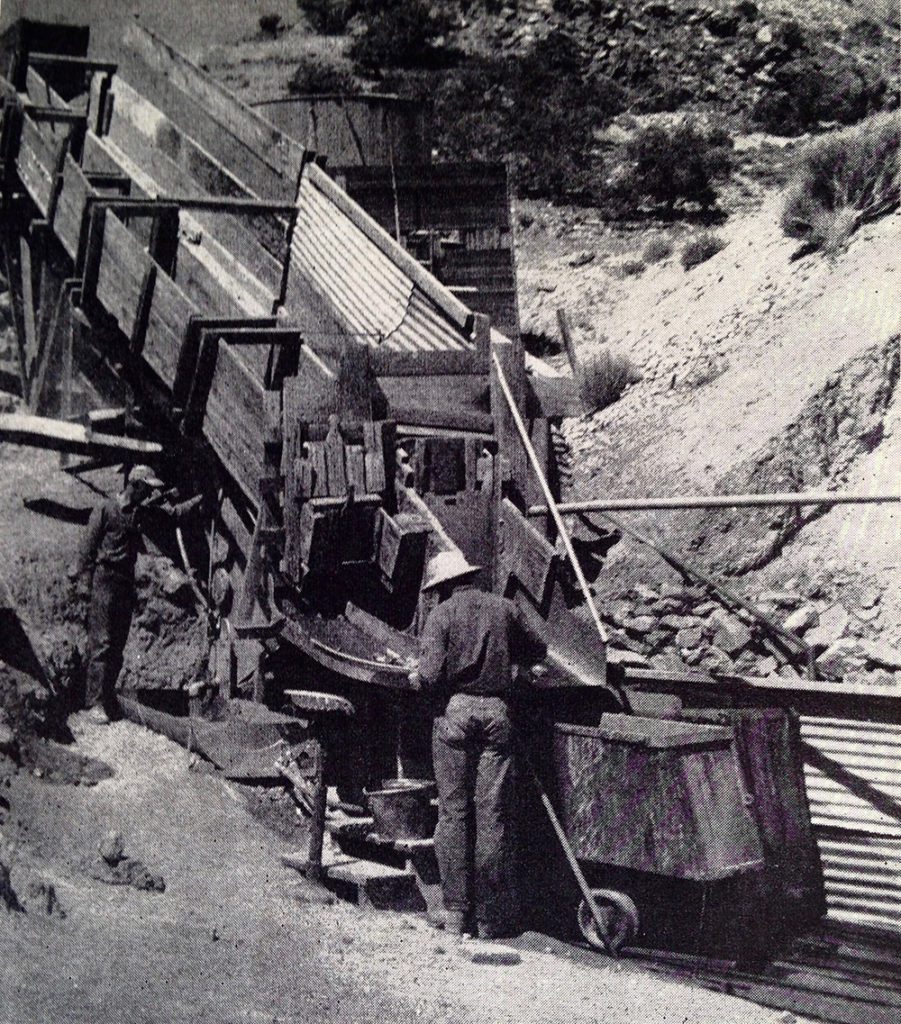
(Photo credit: Desert Magazine)
The “jig”
Walter’s ingenuity and use of salvaged material made the Red Rock Mine profitable. He constructed “The Jig”, a modern sluice box, after studying multiple designs and taking the best features from each. Egg-sized crushed ore was dumped onto a chute where water ran down, washing off sand and pulverizing mercury. Water pressure at Red Rock was insufficient for sluicing and Walter’s creativity again came into play when he designed a system of pumps to recycle the water and increase flow rate. At the bottom or the jig, Roberta or employee Roy Griswold inspected the remaining material which Walter panned similar to placer miners with gold. The finished product was almost pure cinnabar, red sulfide of mercury. The retort headed Cinnabar to 1300 degrees which vaporized the mercury which was then captured and cooled into liquid metal.
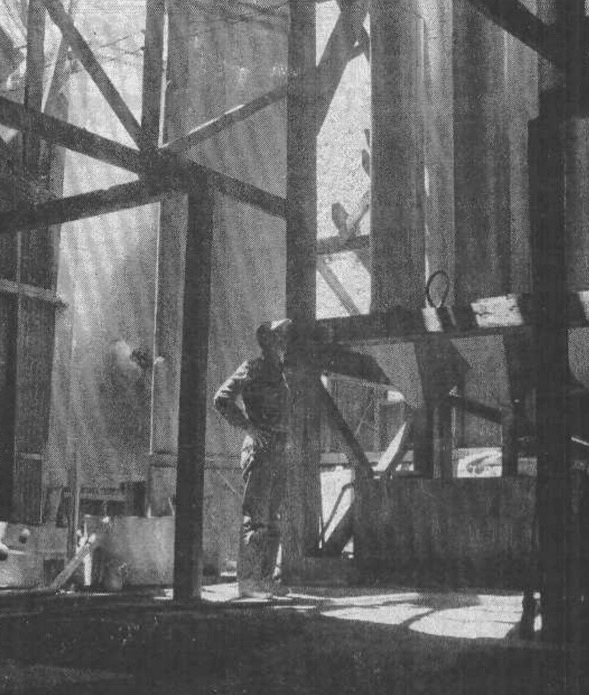
(Photo credit: Desert Magazine)
Walter and Roberta continued to work the mine for 20 years, making Red Rock Mine the only mercury mine in Nevada to be inconsistent production for over thirty years. In 1957 a gas line explosion caused severe burns on Walter’s face and hands. The couple relocated to Reno for medical care and sold the mine in 1960.
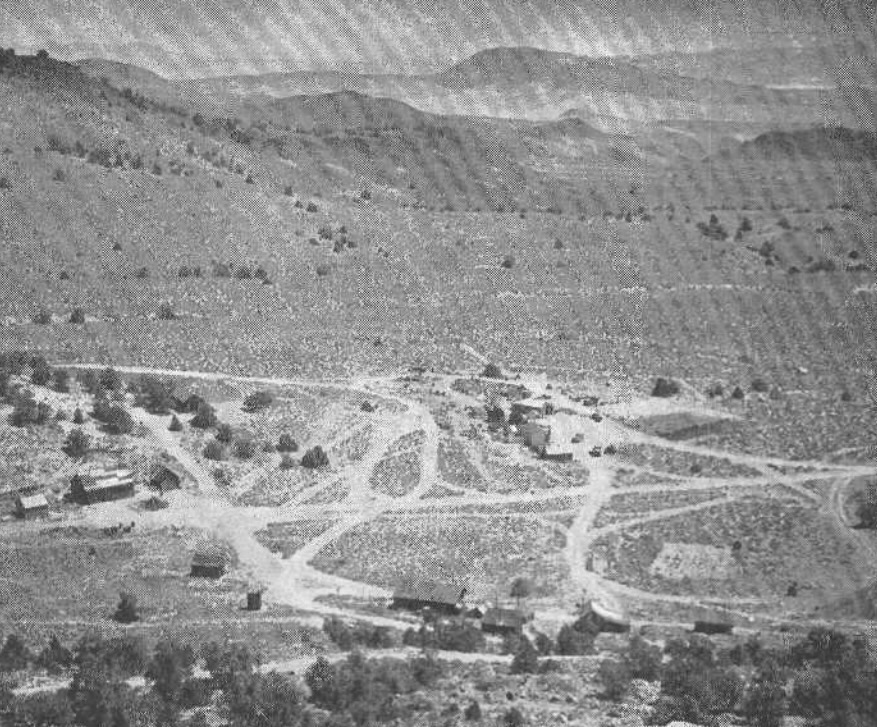
(Photo credit: Desert Magazine)
Ruins at Red Rock
Red Rock Mill
The Comprehensive Environmental Response, Compensation and Liability Act (CERCLA), also known as the Superfund, grants federal agencies the ability to remove substances they believe to be hazardous. In 2012, US Department of Forestry removed contaminated buildings, including the mill. The water tower, ore bin and rotary furnace are the only remains not removed by the USFS.

Call me crazy, but I’m thinking some people aren’t happy with the government’s removal of the mill.
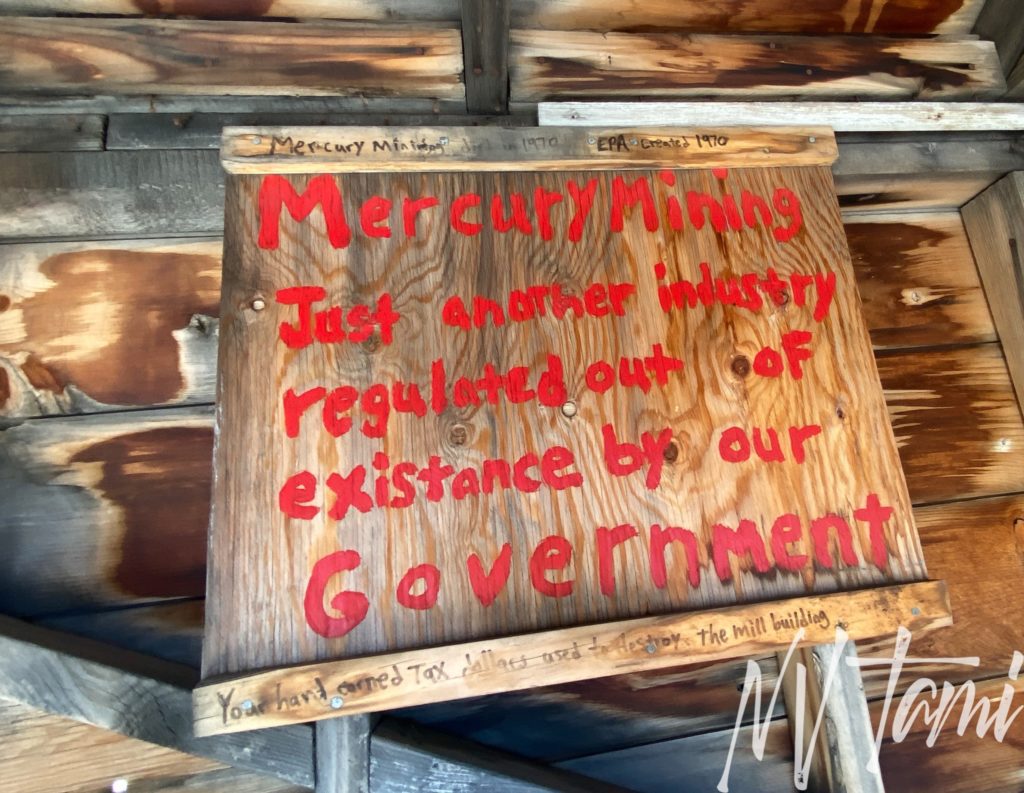
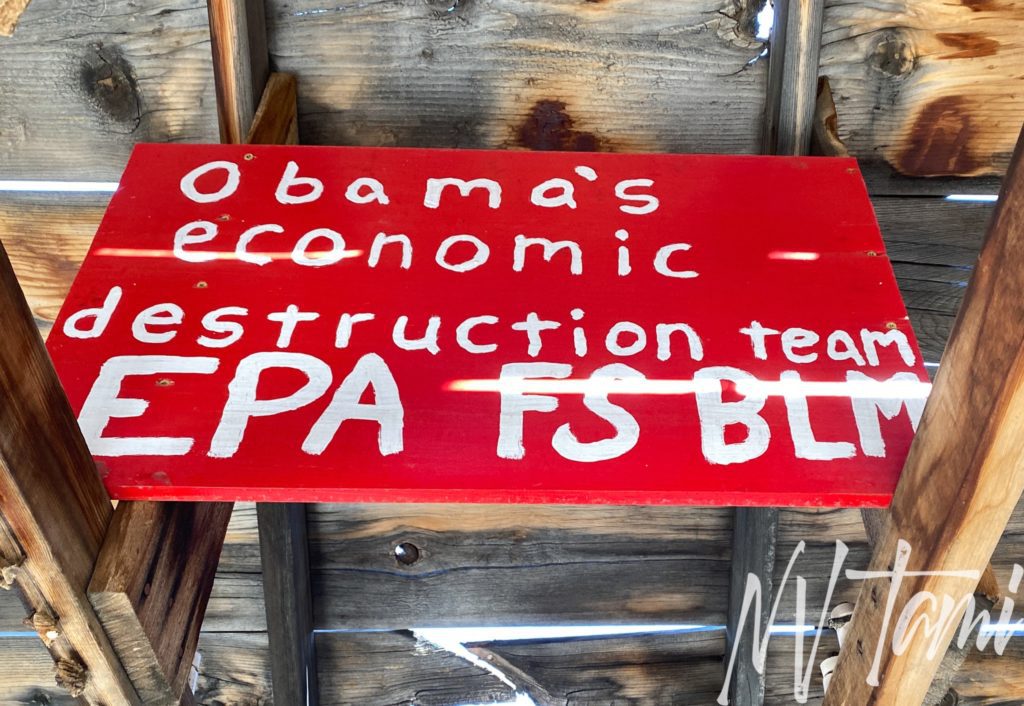
Shops & Housing
Next to the mill site are four structures, likely used as workshops and employee housing. My favorite is the small rock shop between the three wood buildings.
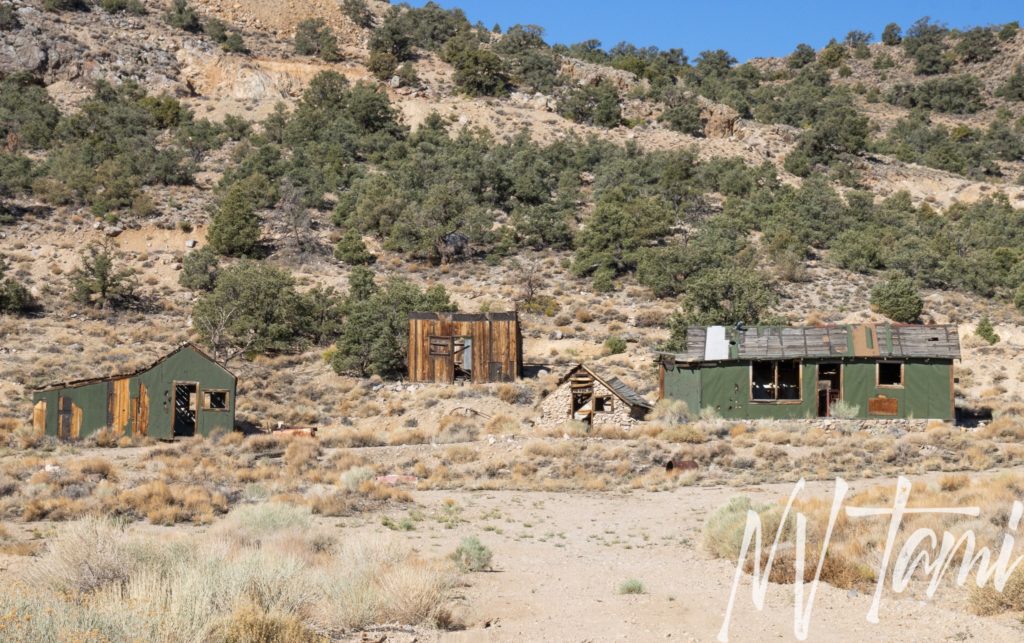
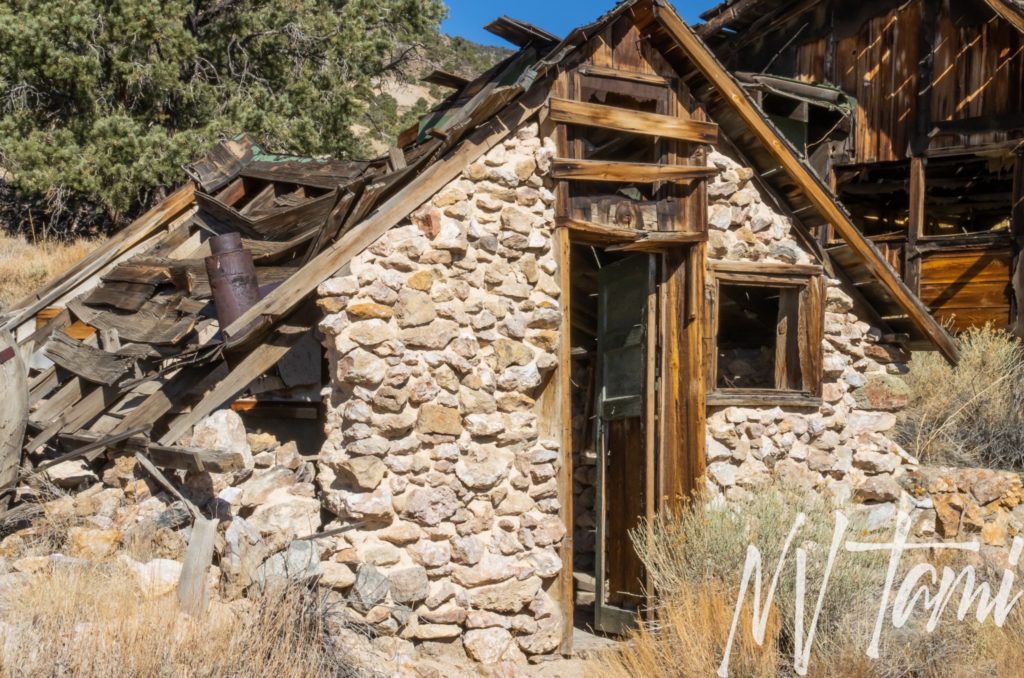
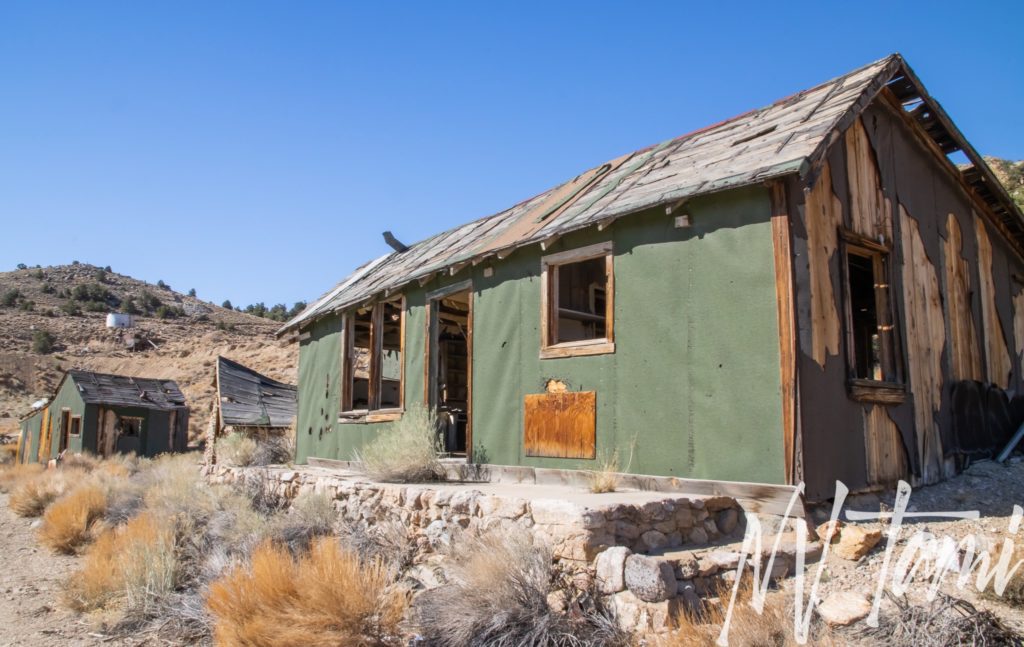
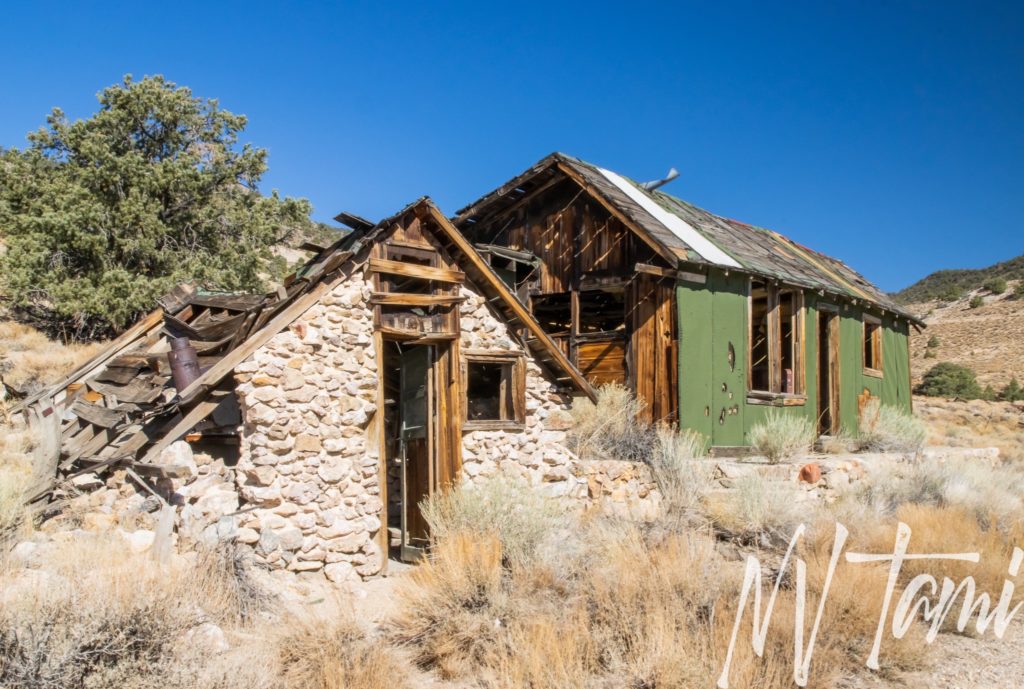
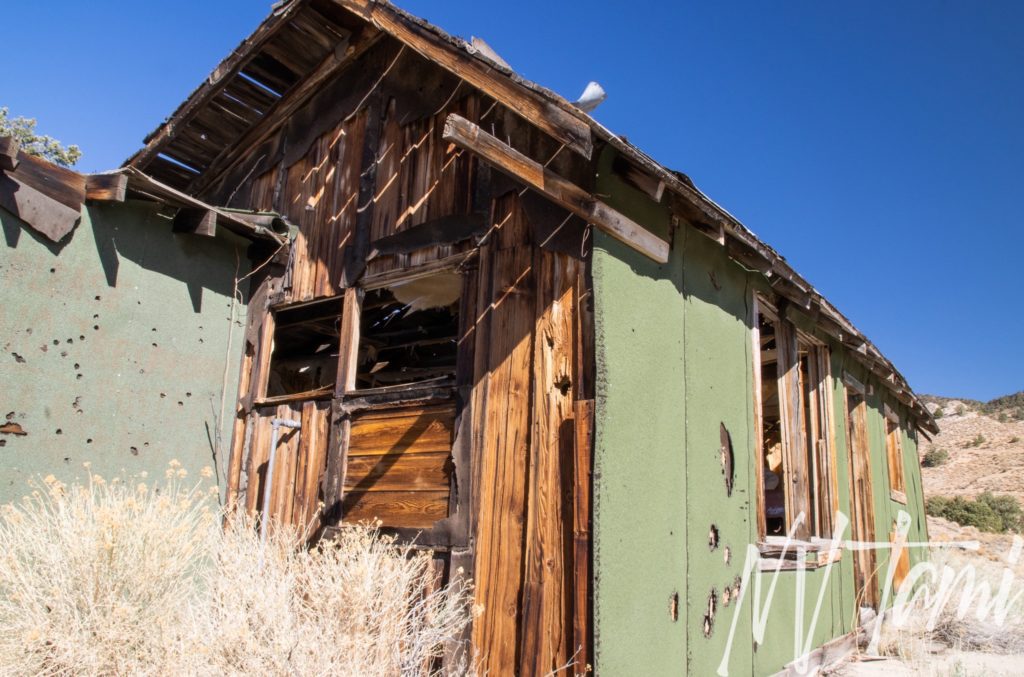
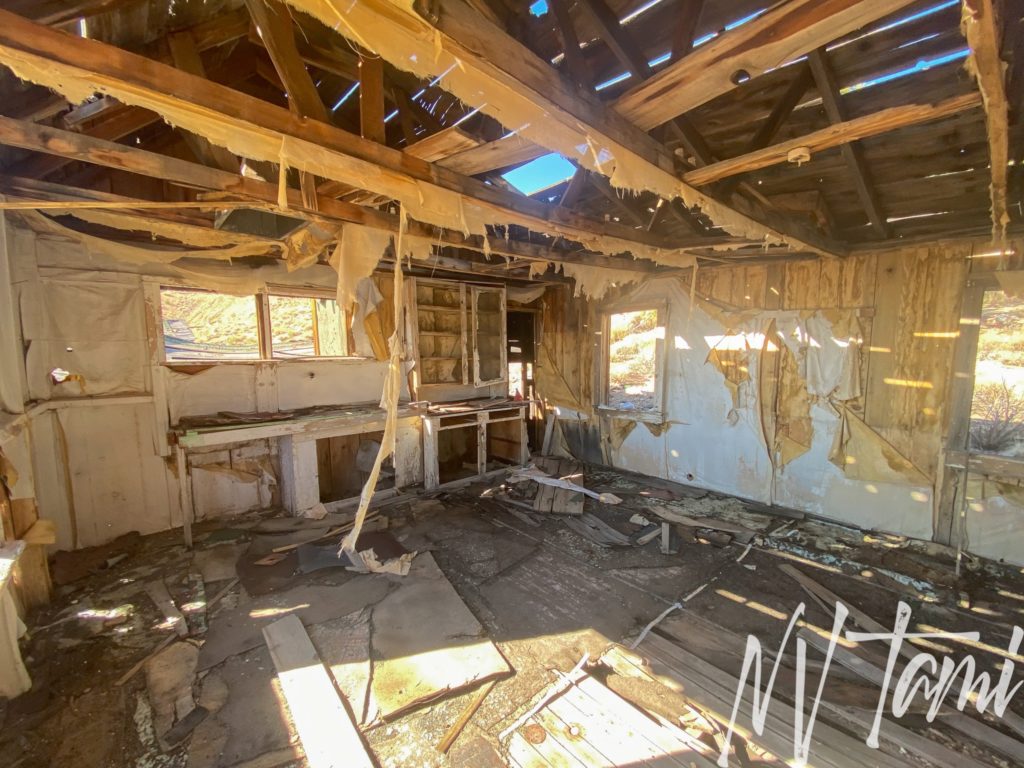
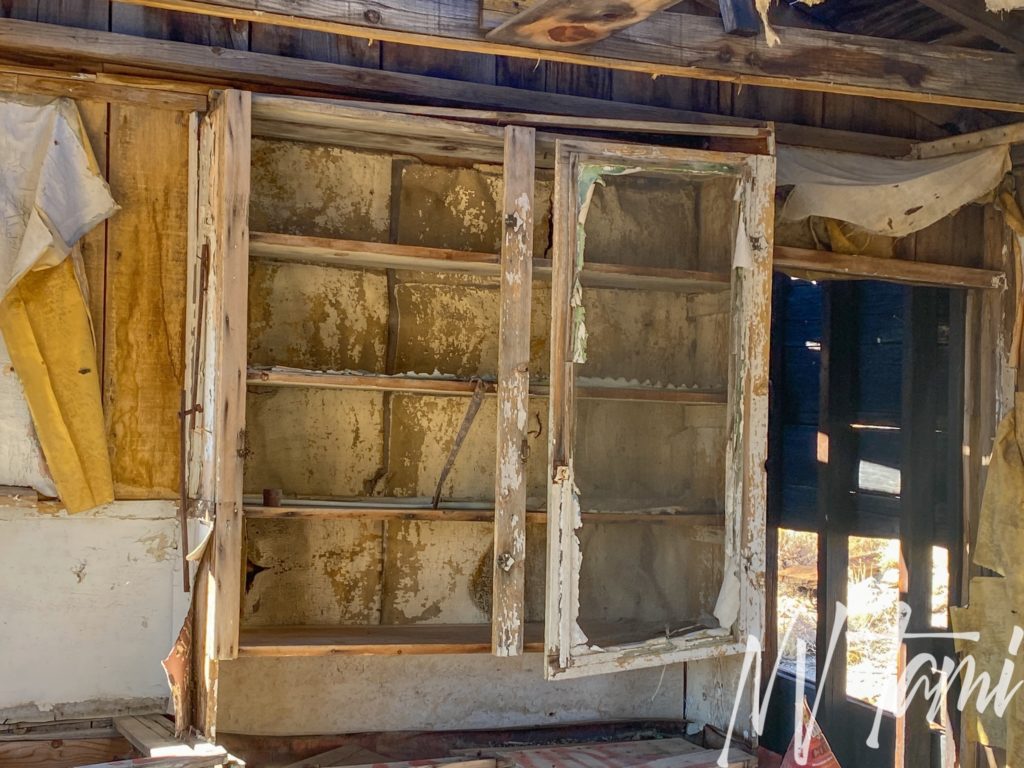
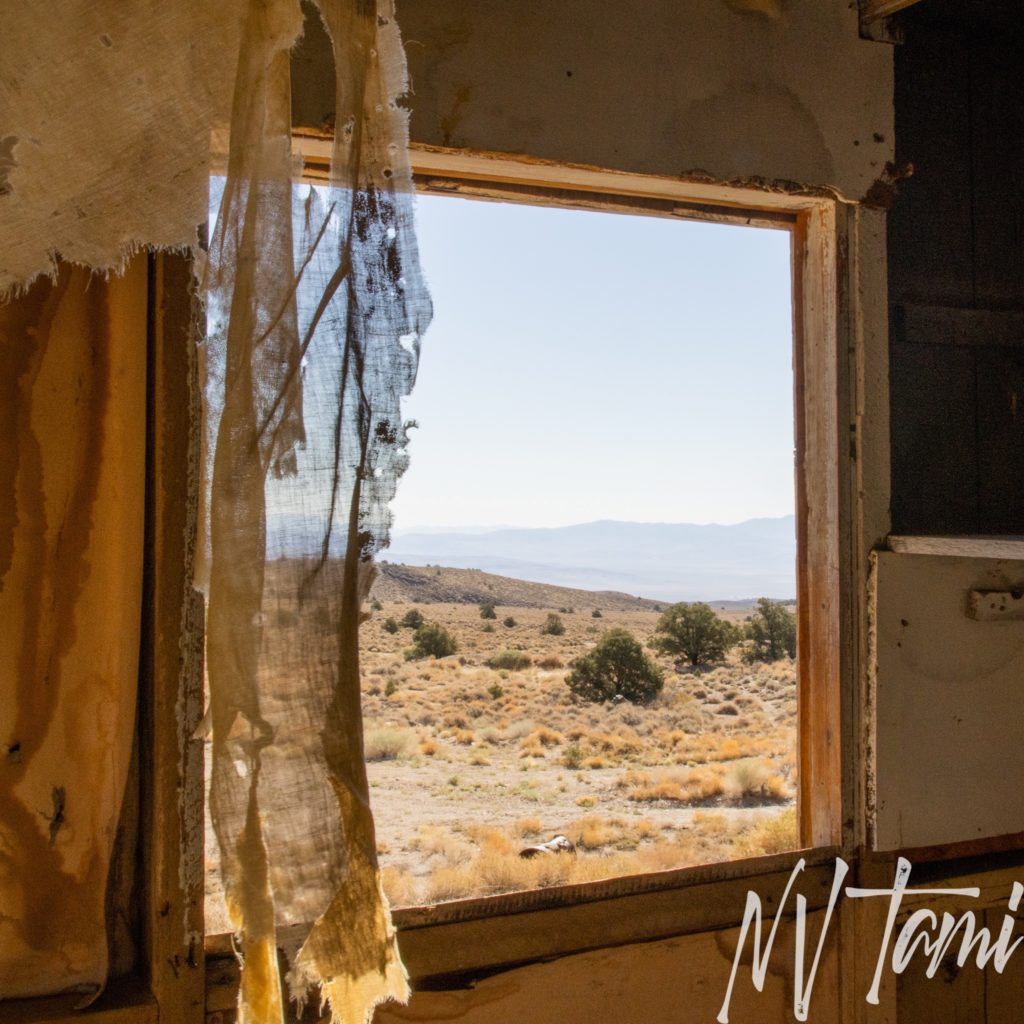
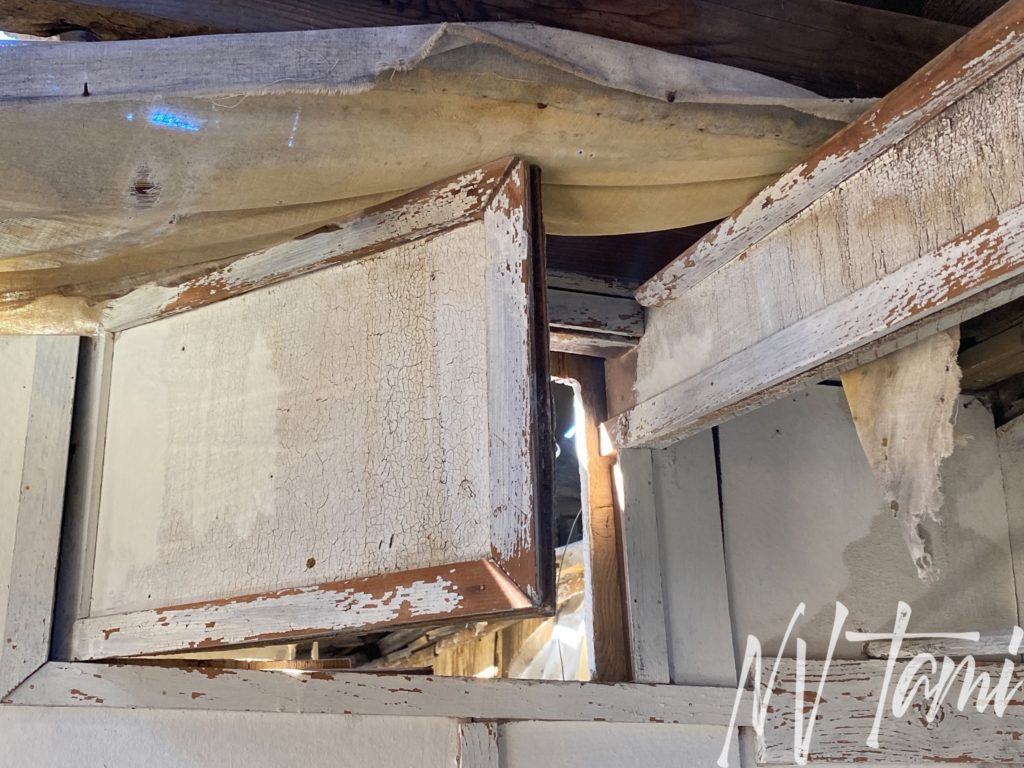
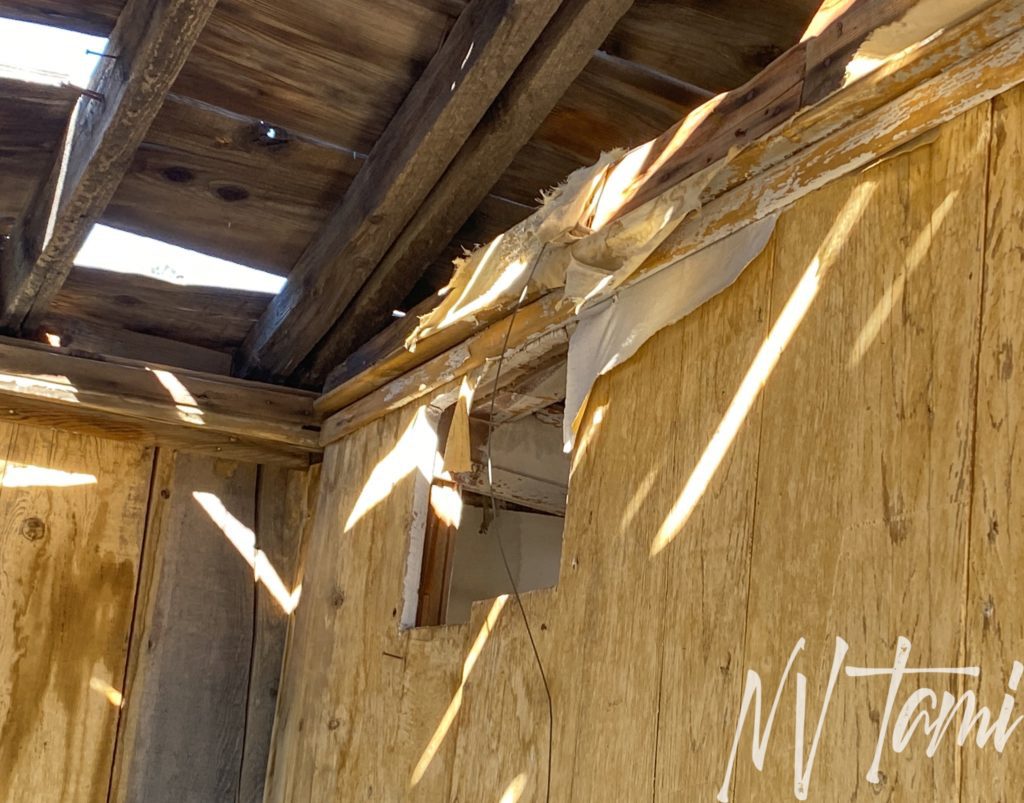
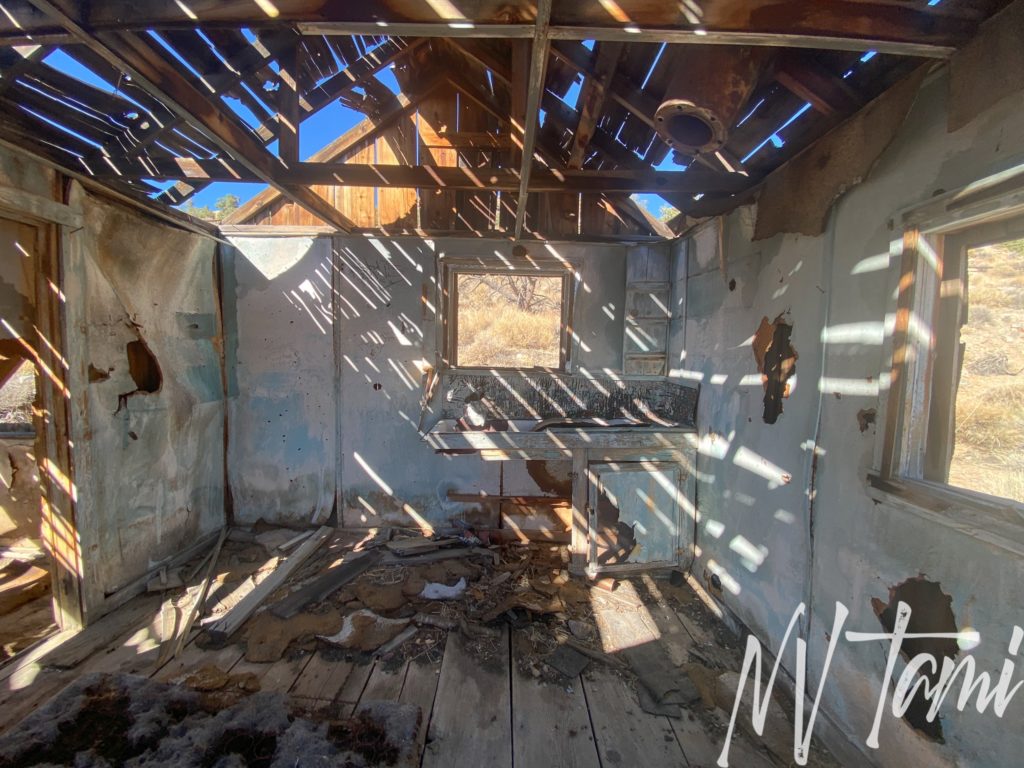
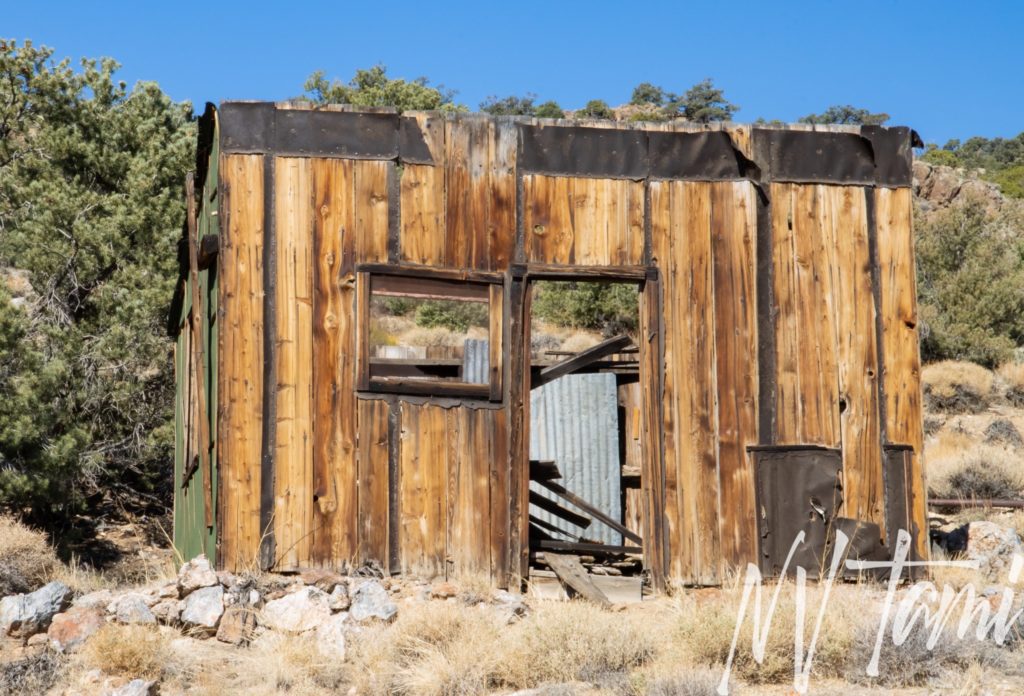
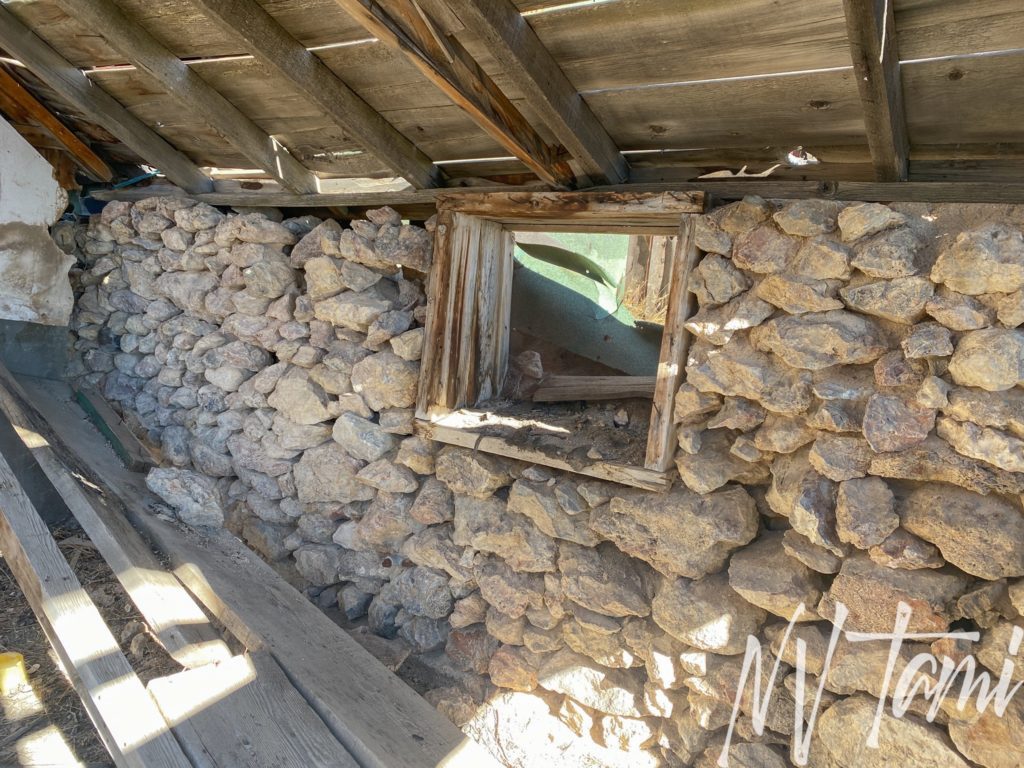
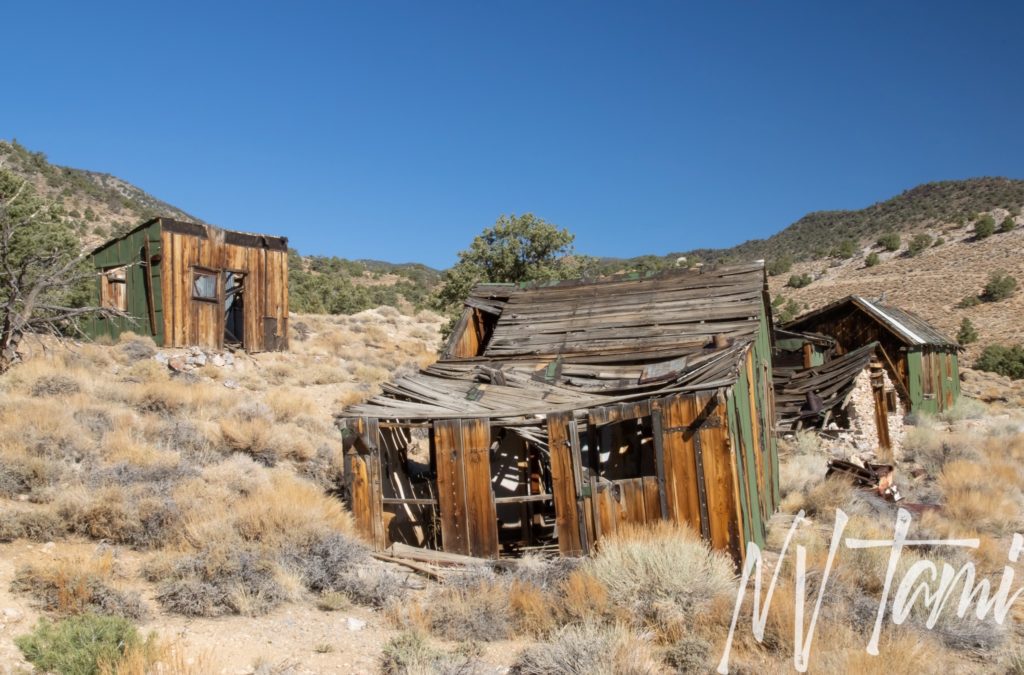
Houses
The houses sit across the road from the mill and shop. In her article, Nell Marbarger, the original ghost towner, mentions that Walter and Roberta lived in a small rock cabin.
Main House
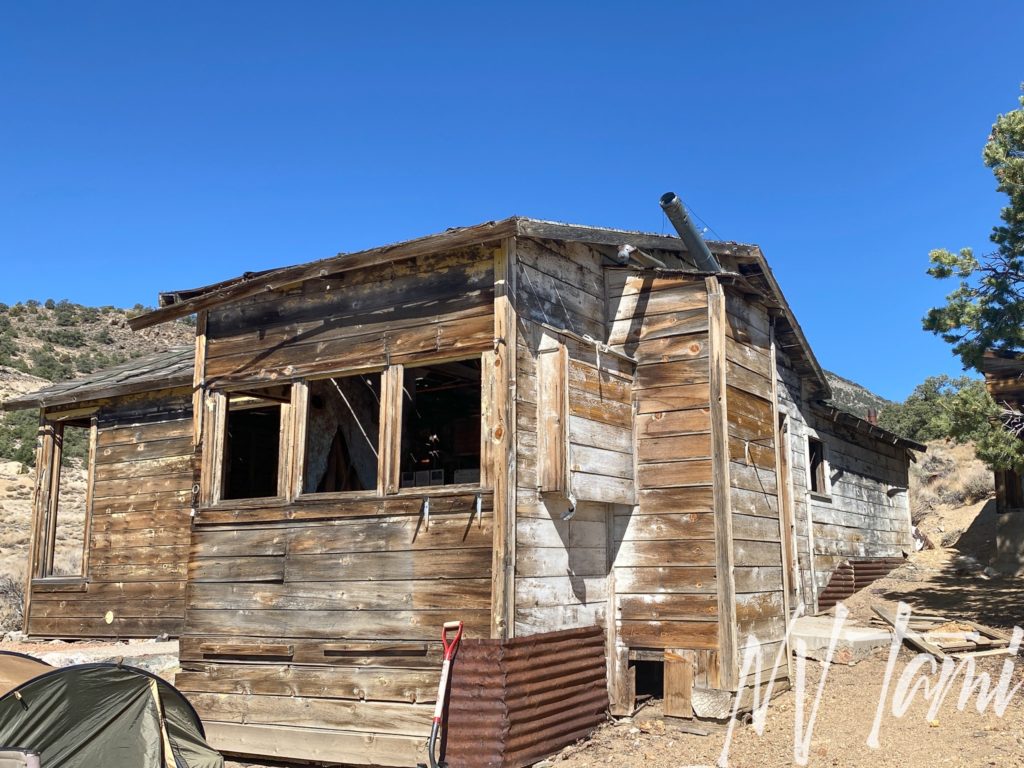
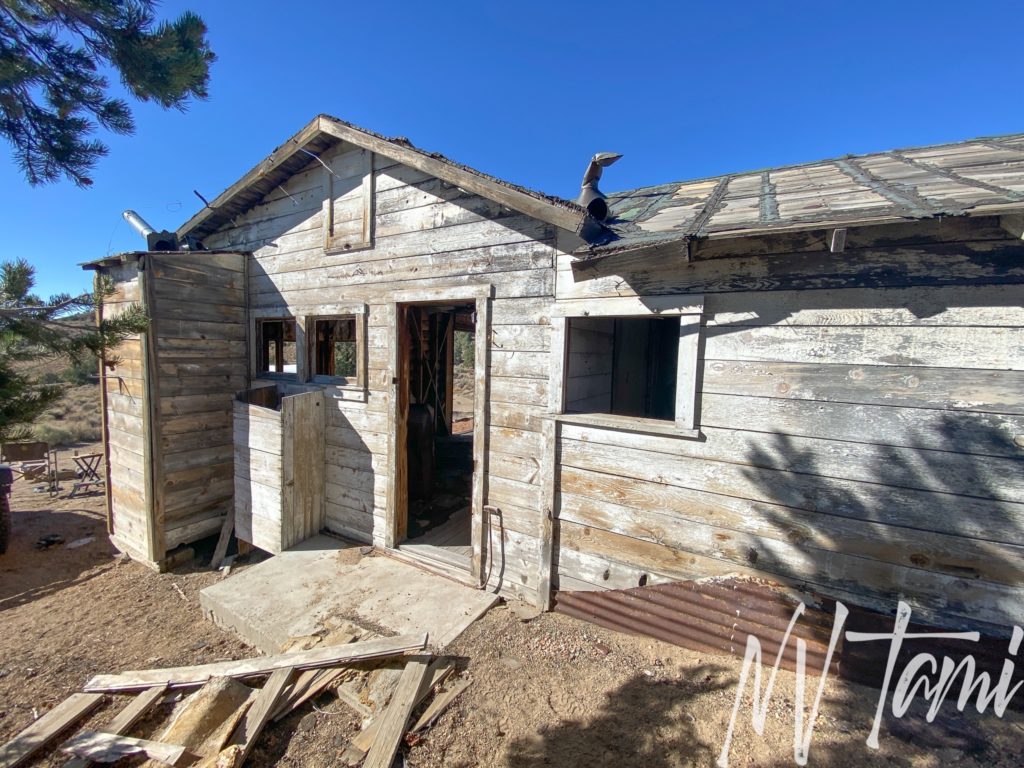
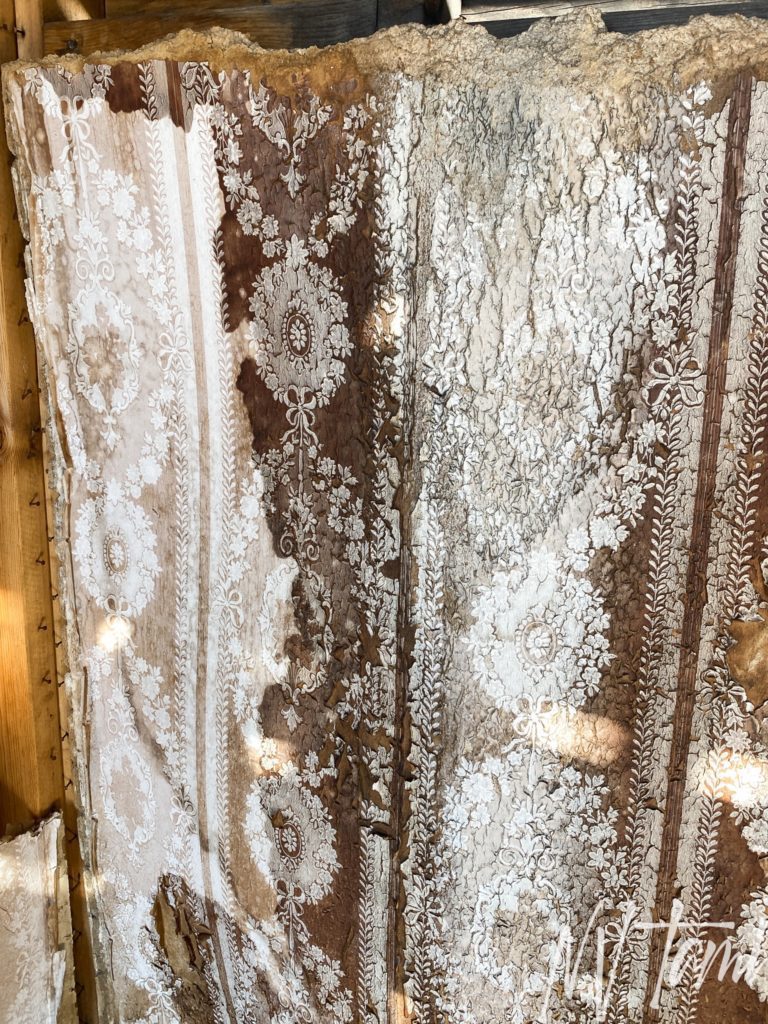
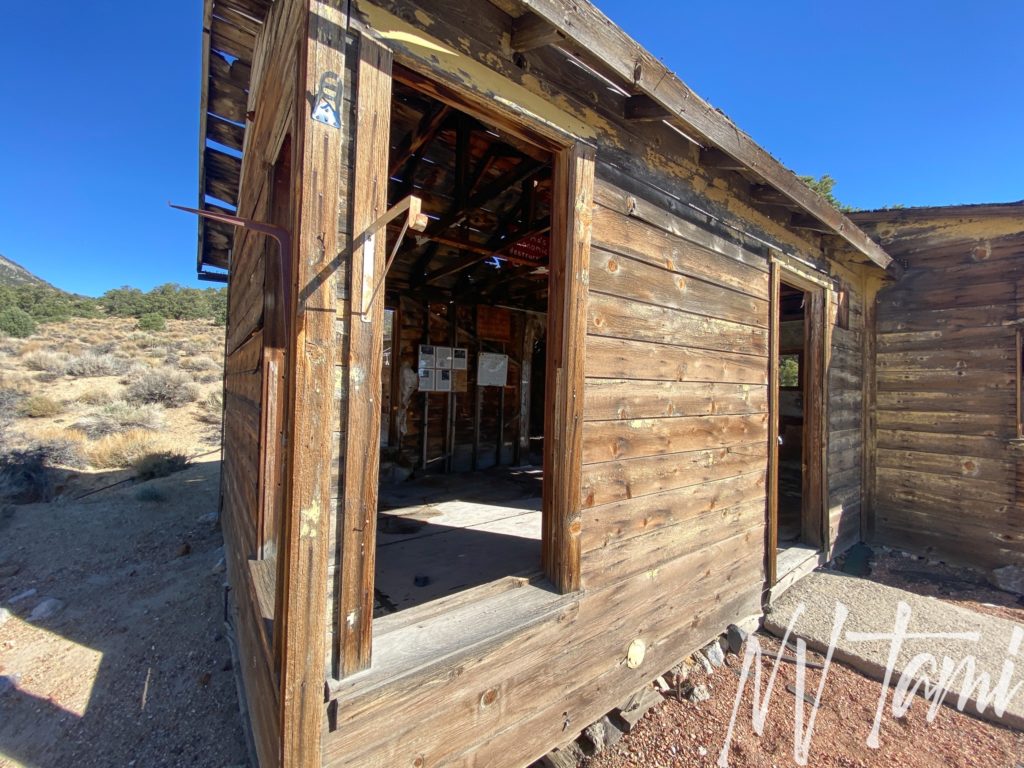

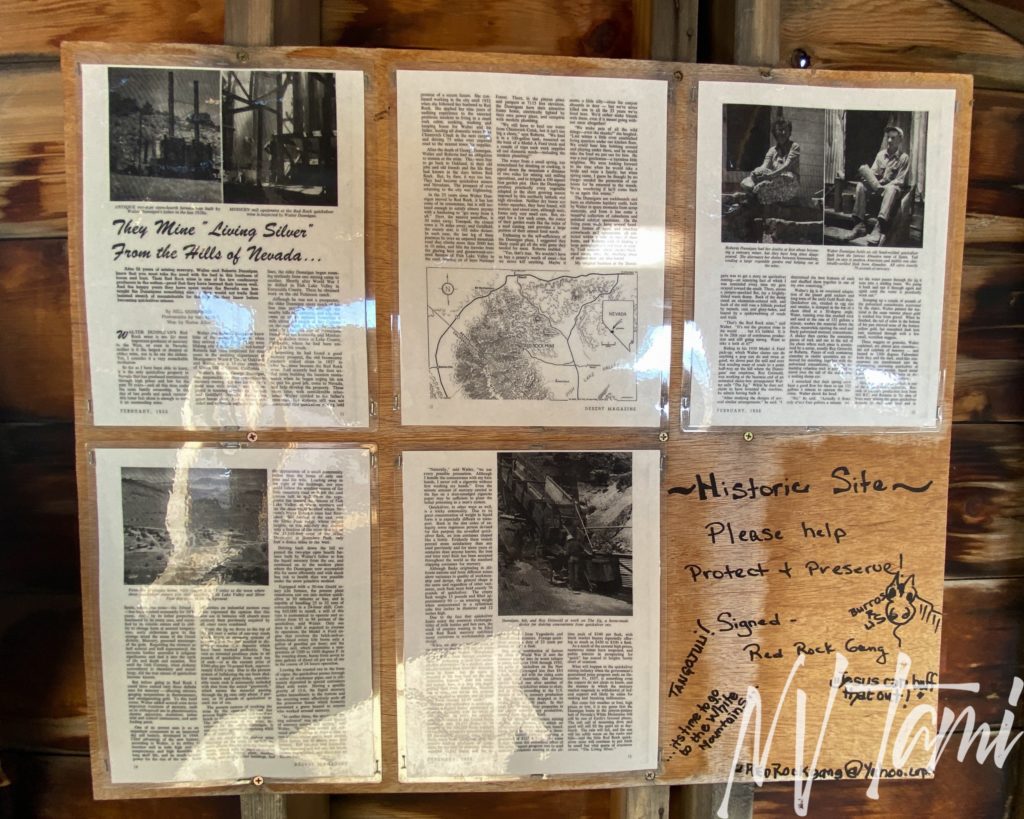
Stone House
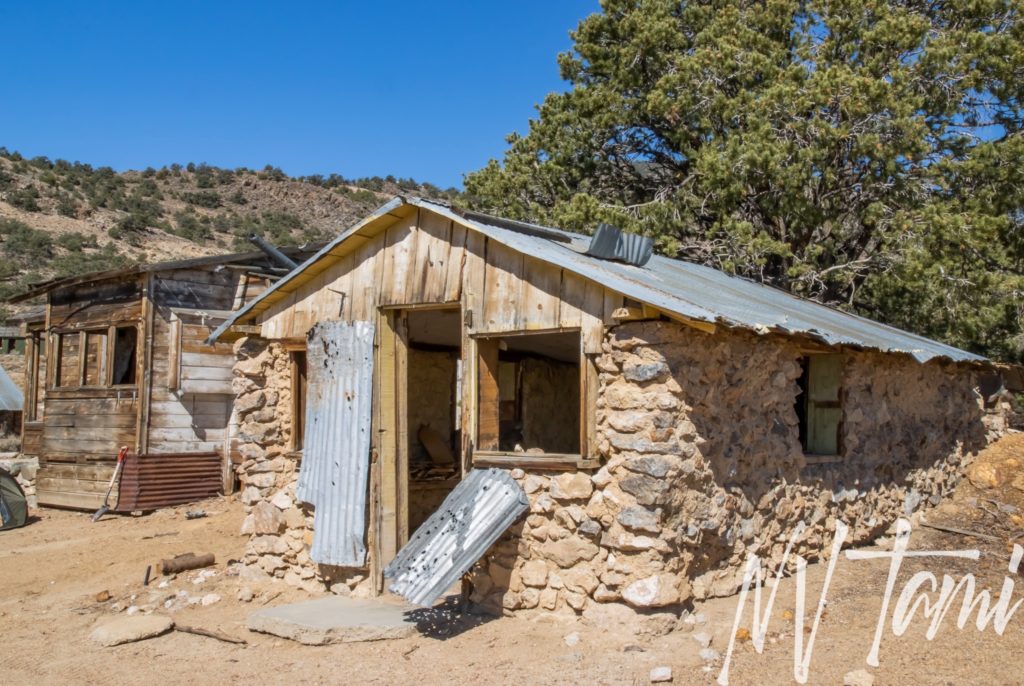
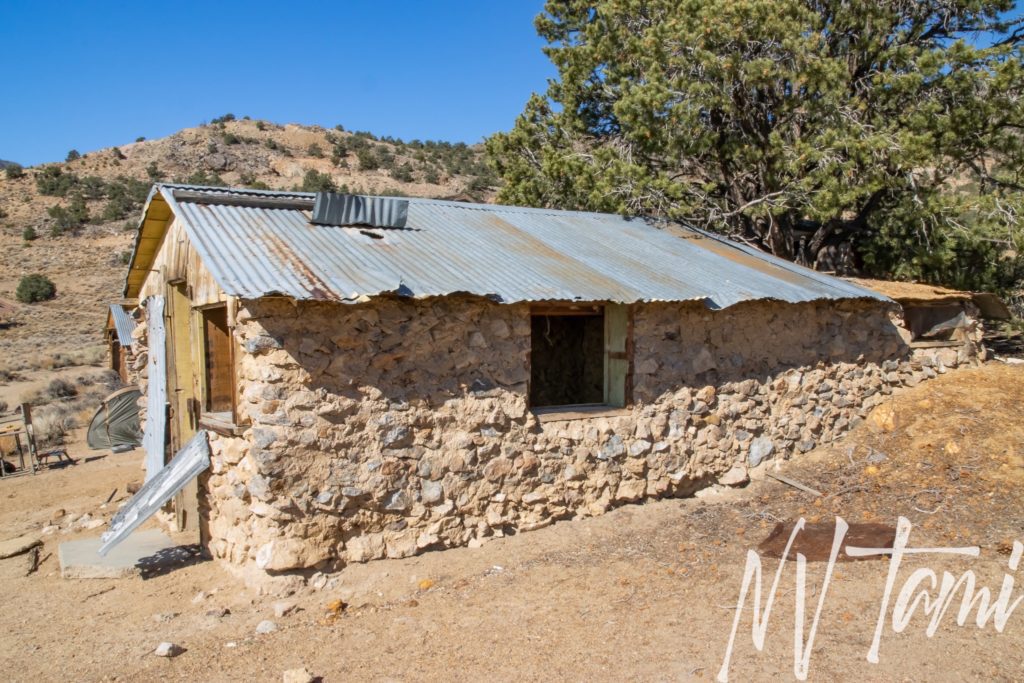
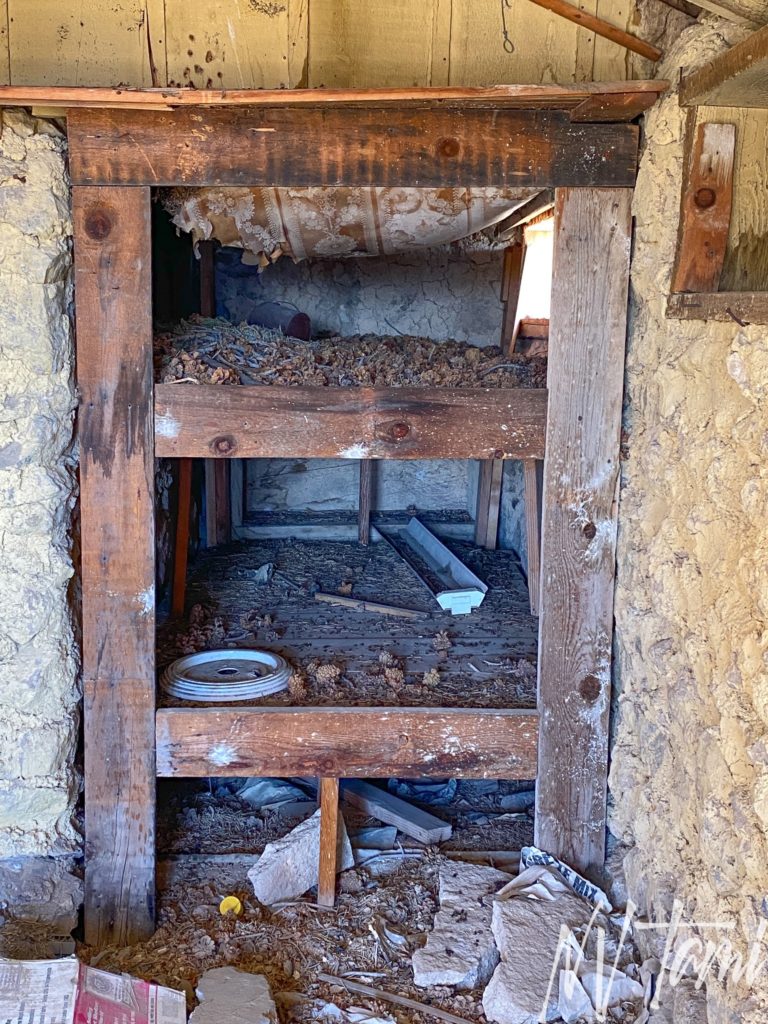

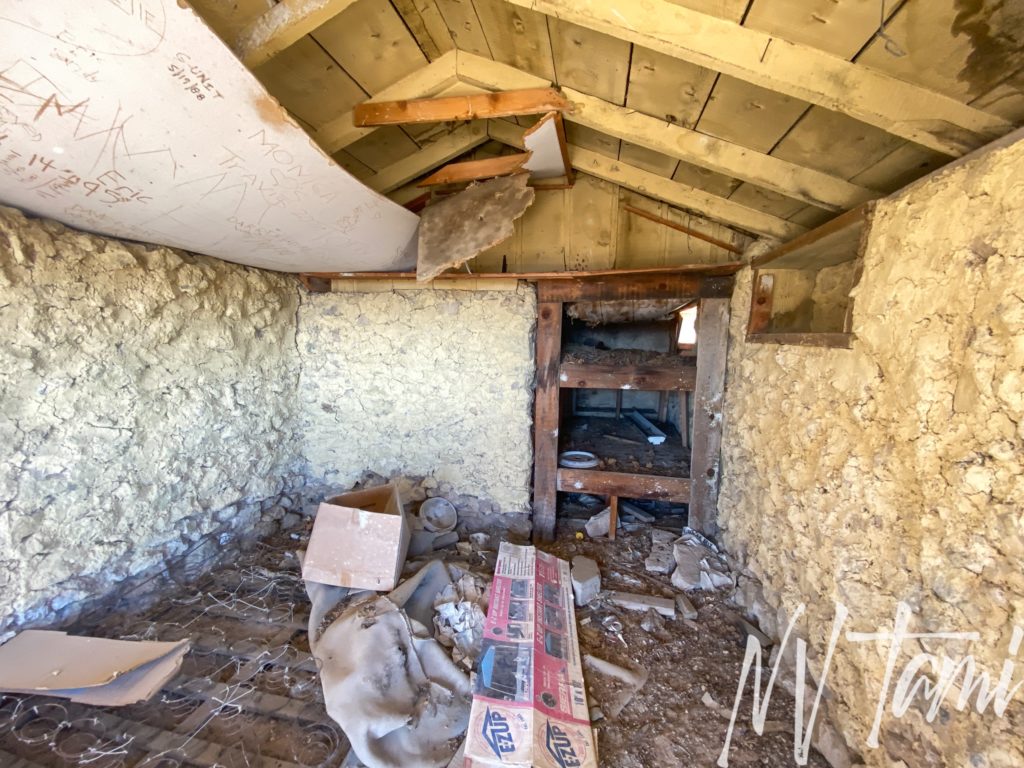
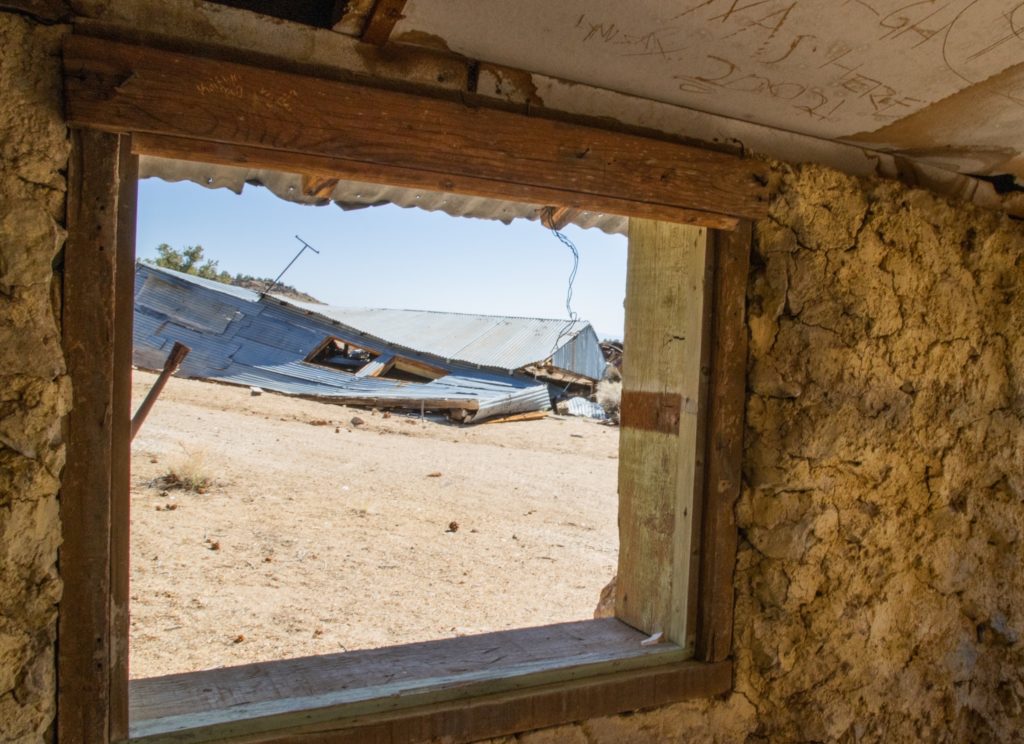
Outbuilding between the two houses
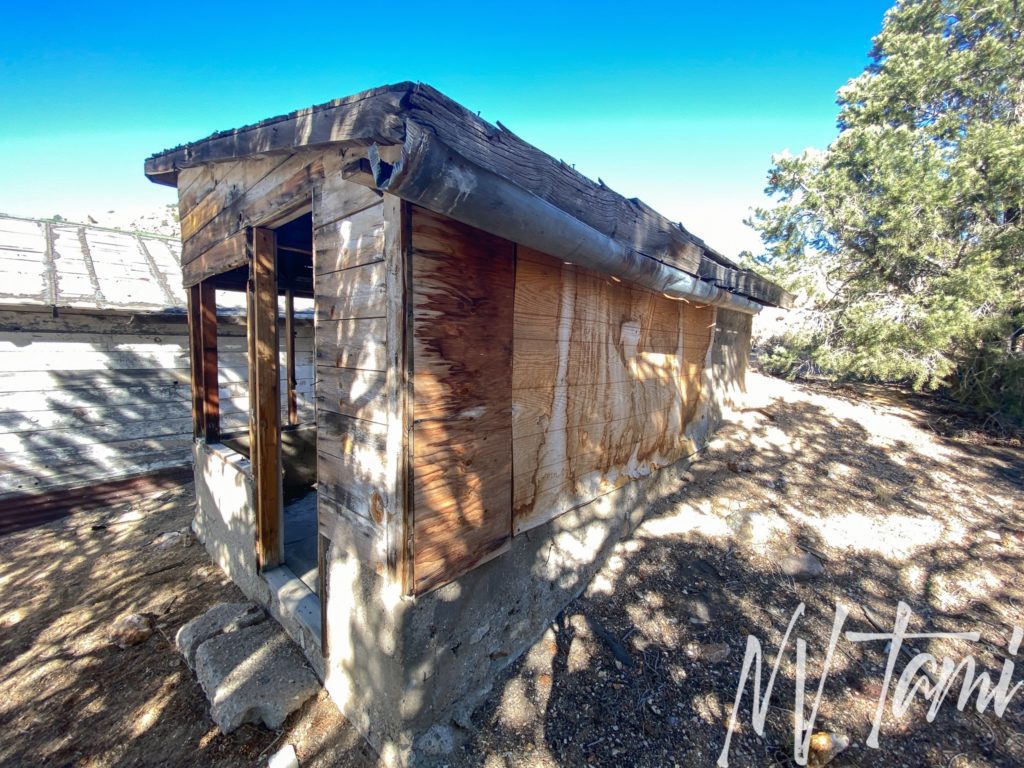
Garage
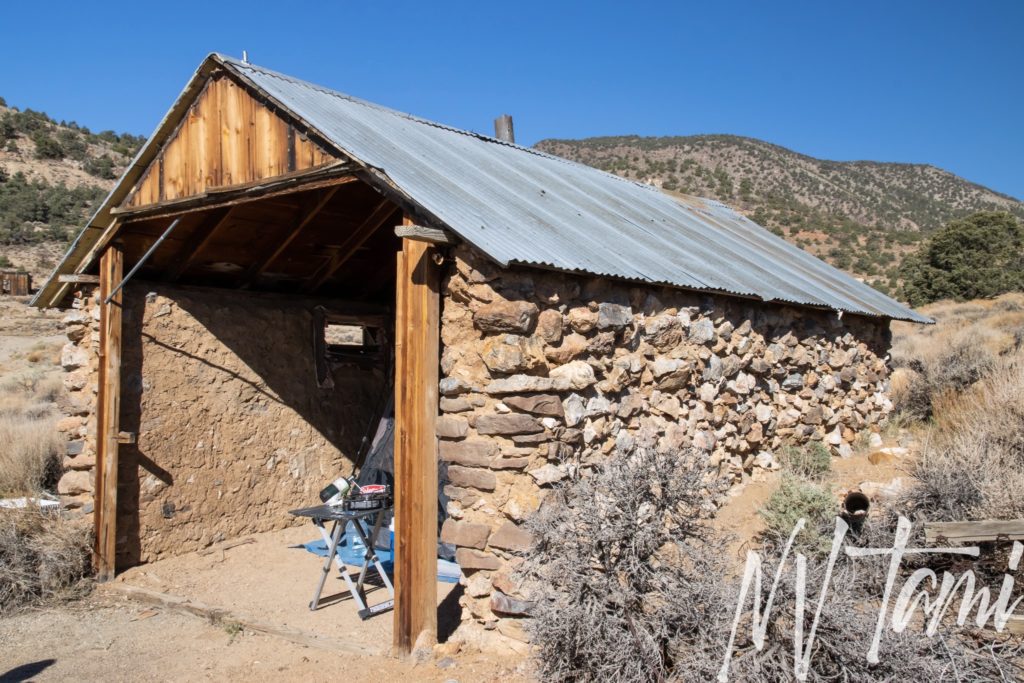
Third House
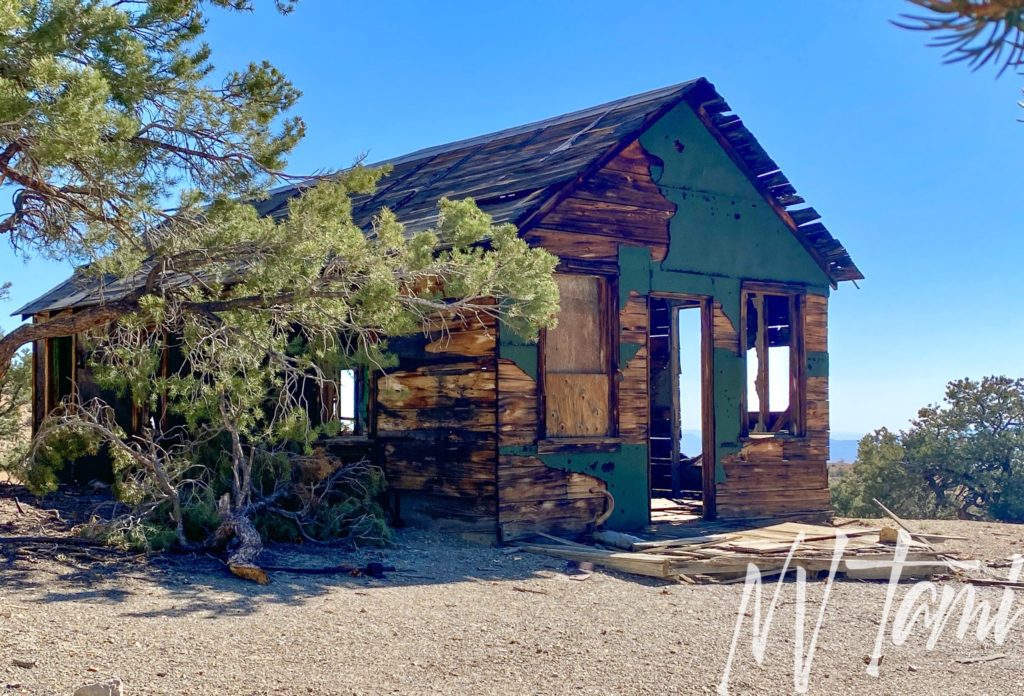

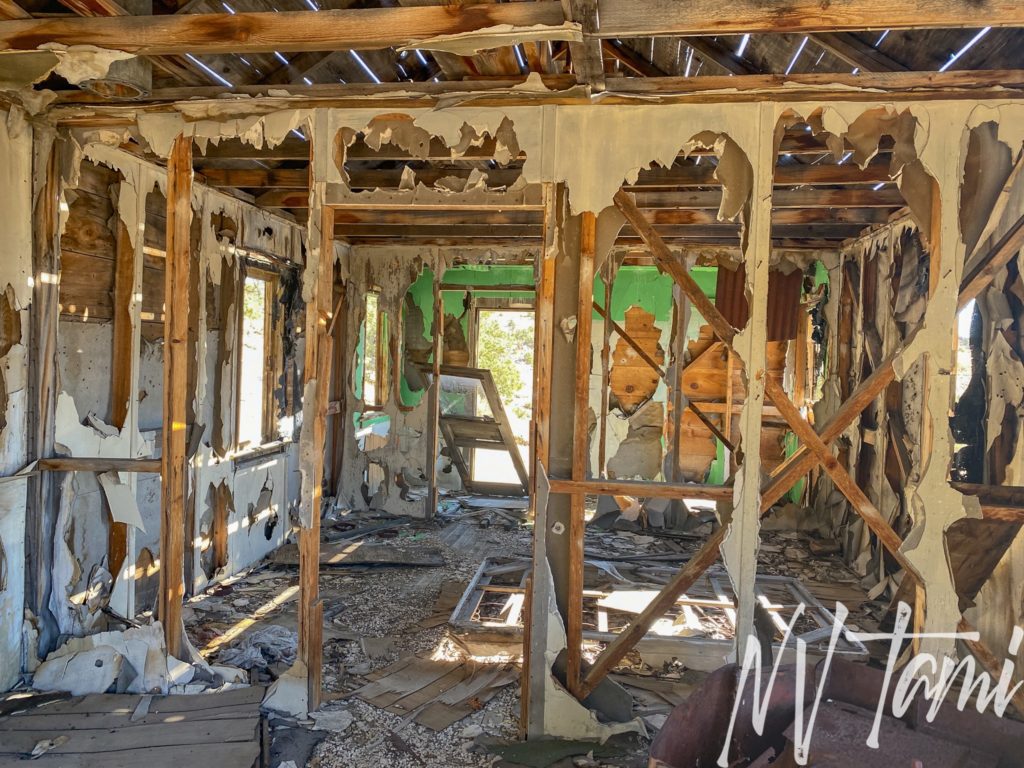
Grounds
Scattered around the site are a variety of abandoned vehicles, debris, equipment and collapsed structures.
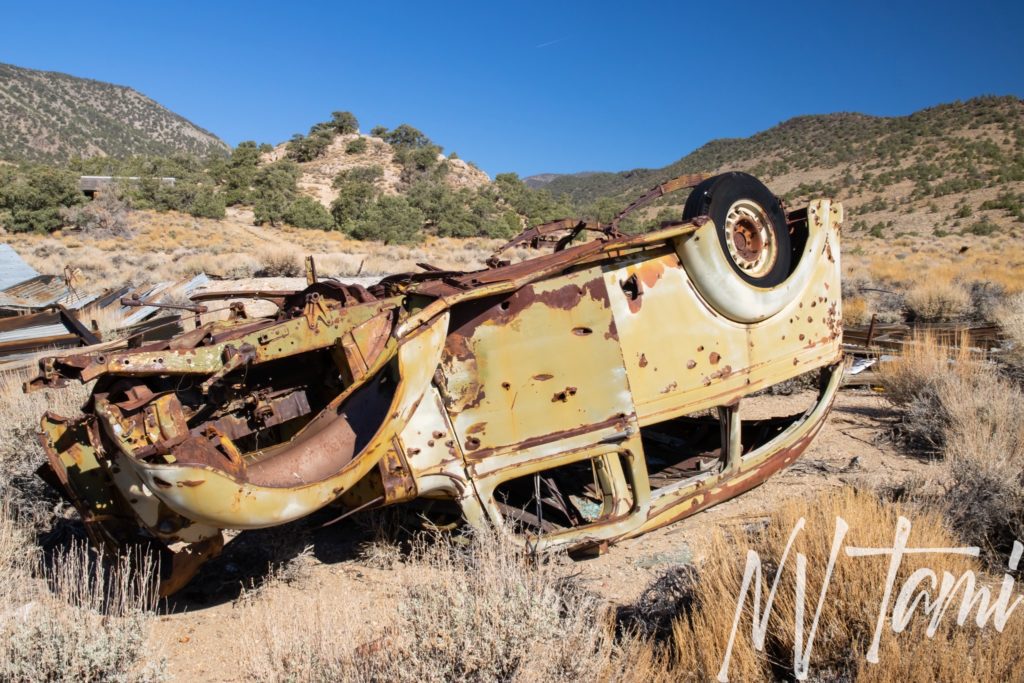


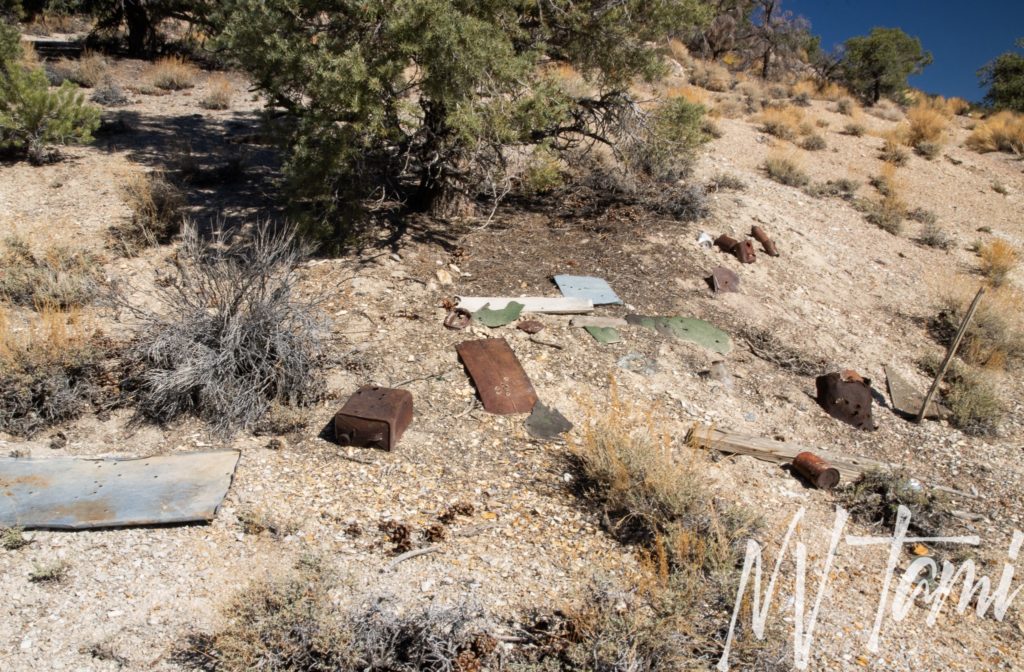
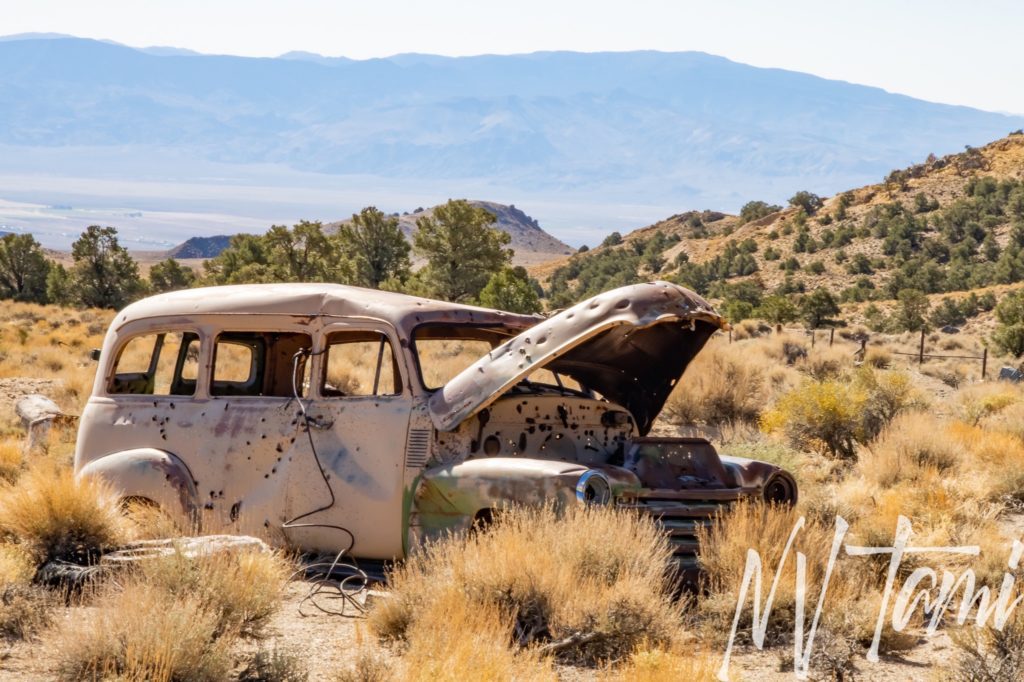
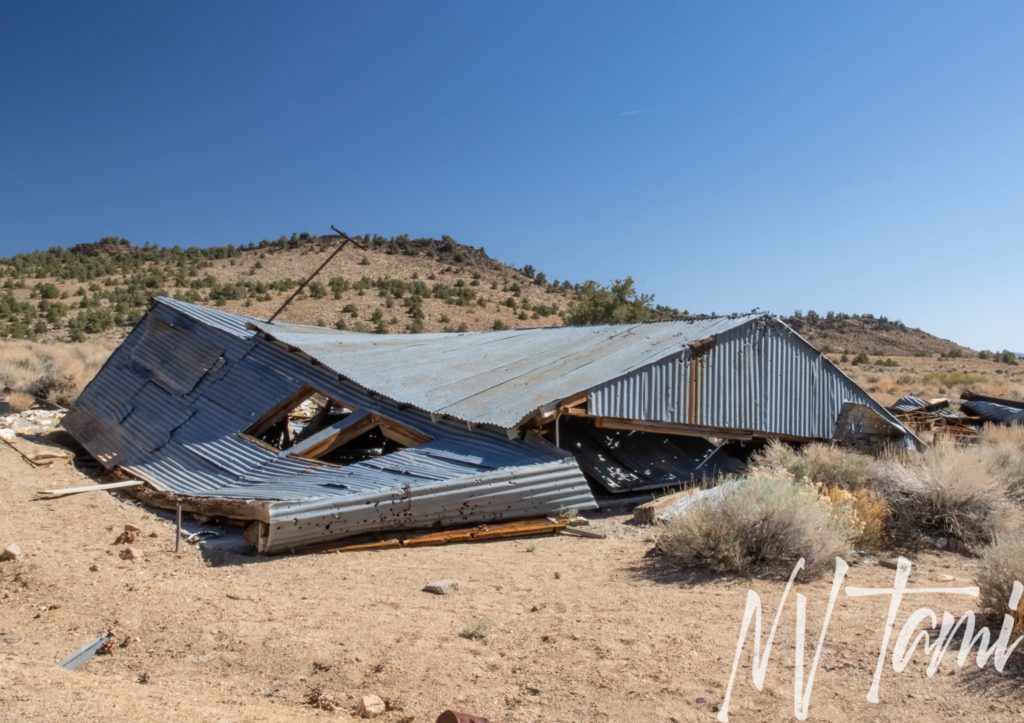
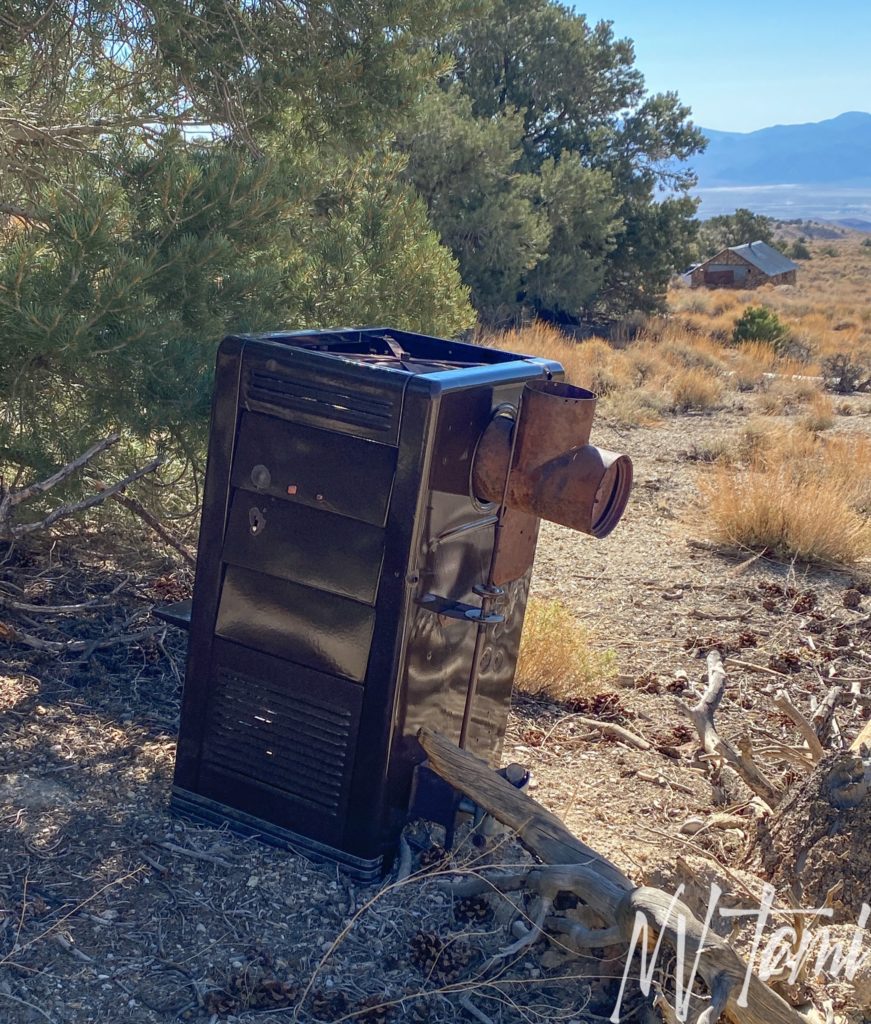
Road Tripping to Red Rock
Stan Paher, Godfather of Nevada Ghost Towns and author of Nevada Ghost Towns and Mining Camps asked me to join him for a day of exploring while I was in Central Nevada.
The plan was to start in Fish Lake Valley at Red Rock Mine, loop around the Silver Peak Range into Gold Point, visiting a variety of locations along our route. I was staying at the Mizpah in Tonopah and left the hotel early with instructions to “keep right” after I reached the dirt road turn-off. Fortunately, a friend lived in the area and met me part way up the unmarked dirt roads or I would have wandered around looking for the ghost-towners. Thanks, Troy, for not letting me get lost!

After organizing at Red Rock Mill we continued to the Fish Lake Valley Heritage Center and Museum in Dyer, Palmetto, Sylvania, Pigeon Springs, Stewart’s Mill, Medicine Rock and ended our trip at Gold Point.
Visited 6-5-2021
WANT MORE GHOST TOWNS?
For information on more than five hundred ghost towns in Nevada & California, visit the Nevada Ghost Towns Map or a list of Nevada ghost towns.
Learn about how to visit ghost towns safely.

References
References
- Carlson, Helen S. Nevada Place Names: A Geographical Dictionary. University of Nevada Press, 1974. Page 102, 113.
- Death Valley Natural History Association: Borax: History and Uses
- Marbarger, Nell. They mine “Living Silver” from the hills of Nevada. Desert Magazine, February, 1956. Pages 11-15.
- The Diggins: Red Rock Mine
- Forgotten Nevada: Red Rock Quicksilver Mine
- Gamett, James and Stan Paher. Nevada Post Offices: An Illustrated History. Nevada Publications, 1863. Pages 58, 62.
- Ghost Towns and Mines: Red Rock Mine, NV
- Legends of America: Borax mining in Death Valley, California
- Lincoln, Francis Church. Mining Districts and Mineral Resources of Nevada. Stanley Paher, 1982. Pages 66-67.
- Minedat: Red Rock Mine
- Nevada State Historic Preservation Office: Fish Lake Valley
- NoeHill Travels in the American West: Nevada. Nevada Historical Landmarks in Esmeralda County
- Paher, Stanley. Nevada Ghost Towns and Mining Camps. Nevada Publications, 1970. Pages 426-427
- Paher, Stanley. Nevada Ghost Towns and Desert Atlas. Nevada Publications, 2009. Page 156-157, 193.
- USGS: Quicksilver Deposits in the Southern Pilot Mountains Mineral County Nevada
- Western Mining History: Red Rock Mine
Steve Knight says
Excellent well written article. I like your newsletter format. It is a very good idea and you will get lots of new readers.
A book in progress!
Roger Peterson says
Great pictures! What a treat!
Irv Stark says
Tami, another excellent posting, thoroughly enjoyed. My wife and I are novice ghost town enthusiasts and do our exploring with a basically street ready Jeep Cherokee; always traveling with a companion vehicle. Some roads to the ghost towns exceed both my off-road driving capabilities and the Jeep’s capabilities, such as the road to Como. We have visited Tunnel Camp, Humboldt City (which just about maxed out our capabilities). Is there a source available with current information on road conditions? Thanks, Tami…love your postings.
Tami says
Thank you, I’m glad you enjoyed the article and have been getting out. It is a long day trip from northern Nevada but you can do Red Rock in a day. The Fish Lake museum is nice too.
Como isn’t necessarily a difficult road, but it is notorious for the rocks! Have you been to Pine Grove? That is a nice day trip and the road is pretty good. Just make sure to take the road to the right when it splits, the left is really washed out. Don’t try Rockland, that is also really rocky.
There isn’t a good resource for current road conditions. Especially this year, conditions change overnight. I would check with the exploring groups to see if anyone has been where you are looking recently. My friend is doing trips through Churchill County, I joined the last time. He pre-runs the route to make sure the roads are good.
https://ccpr.nvexpeditions.com/?fbclid=IwAR0JcKsYuYjBdXTfogy-TRvNcWT35YZhNqPLfqYOIowL4ghnDCM4Txqq_-Q
Irv Stark says
TAMI, Thank you so much for your comments. The party that were traveling with said that the road to Como was in much bette4r condition last year, but was seriously deteriorated this year, probably due to the additional rainfall we had this past winter. Red Rock has been added to the list along with Pine Grove and Jefferson, which looks very interesting and a longer distance but still a possible day trip, road conditions permitting. Thanks again
Tami says
That is very likely, many of the roads deteriotated significantly over the winter and springs. I was on a vehicle recovery on Como road last winter.
Bill Moiarty says
Tami, Thanks for the comprehensive story – and entertaining. Maybe folks need to be reminded: Mercury is very toxic, especially when vaporized.
Tami says
Good reminder, thank you.
Steve Lyon says
Hi Tami,
I really like your newsletter and photographs. Thank you!
Old mines and pioneers have always been a great interest since I moved to Colorado. Having traveled west to the mining states, I found that Nevada had the best preserved, IMHO. It has to be the effect of the desert. But I now worry that age is causing deterioration and without your work and that of your friends, some of the more significant are going to be preserved at least in photos and observations.
Keep up the wonderful explorations!
Steve
Tami says
Thank you so much, that made my morning!
I think Nevada has more ghost towns than other states, but it all depends how you define a ghost town. Some settlements were there and gone in weeks or months.
We are all trying to document what we can. I have worked with several groups to preserve sites like Pine Grove. Sadly, it can e difficult due to government regulations.
Aggie says
Hi Tami,
Thanks for posting the photos of Red Rock Mercury Mine. Back in 2009-2010, I did the archaeological work and managed the Forest Service contract for doing the HABS/HAER recordation of the historic mine in preparation for demolishing it and capping the structure in place as part of the CERCLA action. I recall my several visits out to the mine to do my work, and still remember the metallic taste in my mouth at the end of the day. The photos bring me back, and it looks like much of the historic site still stands! A cool place with an interesting history.
Tami says
Wow, I’m glad they involved an archeologist in the process. I bet you saw some amazing things at Red Rock and other locations. That must have been strange and unsettling tasting the mercury.
Thank you for the work you did to preserve Nevada’s history.